WHERE EVERY VOICE MATTERS





The world must wake up before it’s too late..
African-inspired superfoods to kick-start a healthy new year:
Self Care
Homemade Energy Drinks for Natural Vitality
Women voice
Tongues, bacteria, & balance oh my!
Africa’s Legacy in the Ballon d’ Or:

Dear Reader,
As we close out the final issue of *People of Africa* for 2024, we want to extend our deepest gratitude to you, our readers, for joining us on this incredible journey. This year has been nothing short of remarkable. With our inaugural issue debuting in the spring of 2024, you welcomed us into your homes, your communities, and your hearts. Together, we’ve celebrated the rich culture, resilience, and beauty of the African people, bringing forth the Africa we know and love.
As we look ahead to 2025, our commitment remains stronger than ever. As we look ahead to 2025, our commitment remains stronger than ever to shed an even brighter light on the Motherland, to tell stories that have too often been overlooked, and to challenge the stereotypes perpetuated by Western media. Our mission is clear: to highlight the true brilliance of Africa and its people.
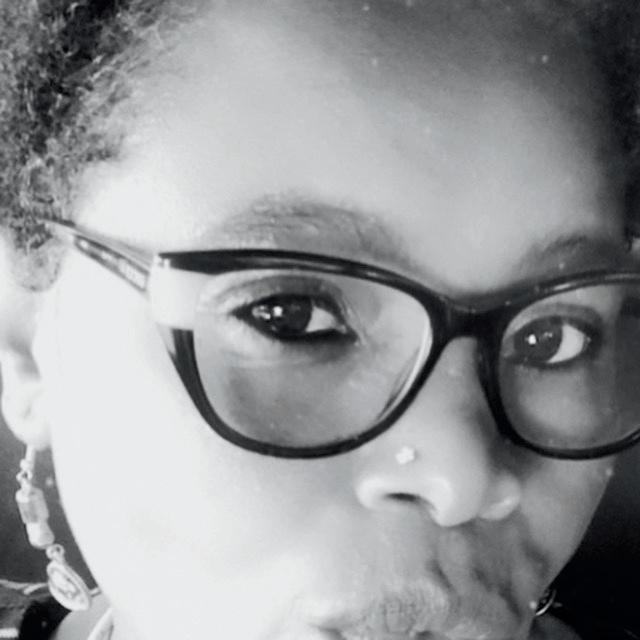
Letusneverforget beingAfricanisnot merelyaboutthe colorofour skinitisaboutthe depthofourpride.
We invite you to be part of this journey. Our doors are open to your voices, your stories, and your ideas. Let us know what matters to you, where our focus should be, and how we can continue to elevate the narrative of Africa. The question we continue to ask ourselves and now ask you is:
*What does Africa mean to you? For us, Africa is not just a place; it is everything that its people embody.
As we bid farewell to 2024, we step into the new year with pride and purpose, united in our identity as Africans. Together, we are stronger. Together, we fight for a brighter future. And if we allow division to be sown by outsiders, we risk losing control of the destiny that is rightfully ours.
Let us never forget being African is not merely about the color of our skin—it is about the depth of our pride.
From the bottom of my heart, thank you.
With heartfelt thanks,,
Honeymoon Aljabri Chief Editor, People of Africa


As we close out 2024, one stark truth emerges: the world is on fire, and the United Nations is doing little more than watching it burn. Once established to prevent exactly the kind of global crises we now face, the UN has become a bystander to wars, humanitarian disasters, and unchecked violence. The flames of conflict rage across Ukraine, Israel and Palestine, Sudan, and the Congo, and yet the so-called guardians of peace sit idly by. The question we must ask is not whether the UN is failing, but why it exists at all if it cannot do its job.
Consider the conflict in Ukraine a war that has claimed tens of thousands of lives and displaced millions. Despite countless UN Security Council meetings and high-profile condemnations, there has been no meaningful intervention to stop the bloodshed. Instead, world powers jockey for influence while ordinary citizens suffer. Meanwhile, in Palestine, more than 40,000 people have lost their lives, with the violence continuing to escalate. Despite this staggering loss of life, the West continues to arm Israel, providing bombs and military support. As the conflict now to spread into Lebanon, Iran, and Yemen, the risk of a wider regional war grows by the day. Where is the UN in all of this? Where is the moral leadership to stop this catastrophe?
In Sudan, the situation is equally tragic. The UN has been unable to prevent the humanitarian catastrophe unfolding there, as violence, hunger, and displacement continue unchecked. The same goes for the Congo, where millions have died in one of the most brutal conflicts of our time. Where are the peacekeepers? Where is the action? What happened to the fundamental belief that *all human beings have the right to be alive*?
The harsh reality is that the United Nations has become nothing more than a stage for world powers to flaunt their influence. It is no longer an organization for global peacekeeping it is a puppet of those who bankroll it. Those who possess nuclear weapons hold the loudest voices, dictating the world”s agenda while the rest of us watch from the sidelines. The UN’s structure itself allows for the dominance of a select few, while the majority of the world’s nations are relegated to the role of spectators. What use is an organization where a handful of countries, armed with nuclear weapons, decide the fate of millions?
The question is no longer whether the UN should continue to exist, but whether other organizations should step in where it has failed.
We must face the facts: the UN has lost its credibility. It was designed to prevent war, protect human rights, and foster international cooperation, but it has failed spectacularly at all three. Its peacekeeping missions are often too late, too weak, or too ineffectual to make a difference. Its resolutions are ignored or vetoed by the very powers meant to uphold them. And while the UN continues its endless meetings and grand speeches, the world burns. The question is no longer whether the UN should continue to exist, but whether other organizations should step in where it has failed. Regional bodies like the European Union, BRICS, and the African Union have the potential to bring fresh leadership to a world that is desperately in need of it. These coalitions may be the ones to finally extinguish the flames of conflict, while the UN remains trapped in bureaucratic paralysis.
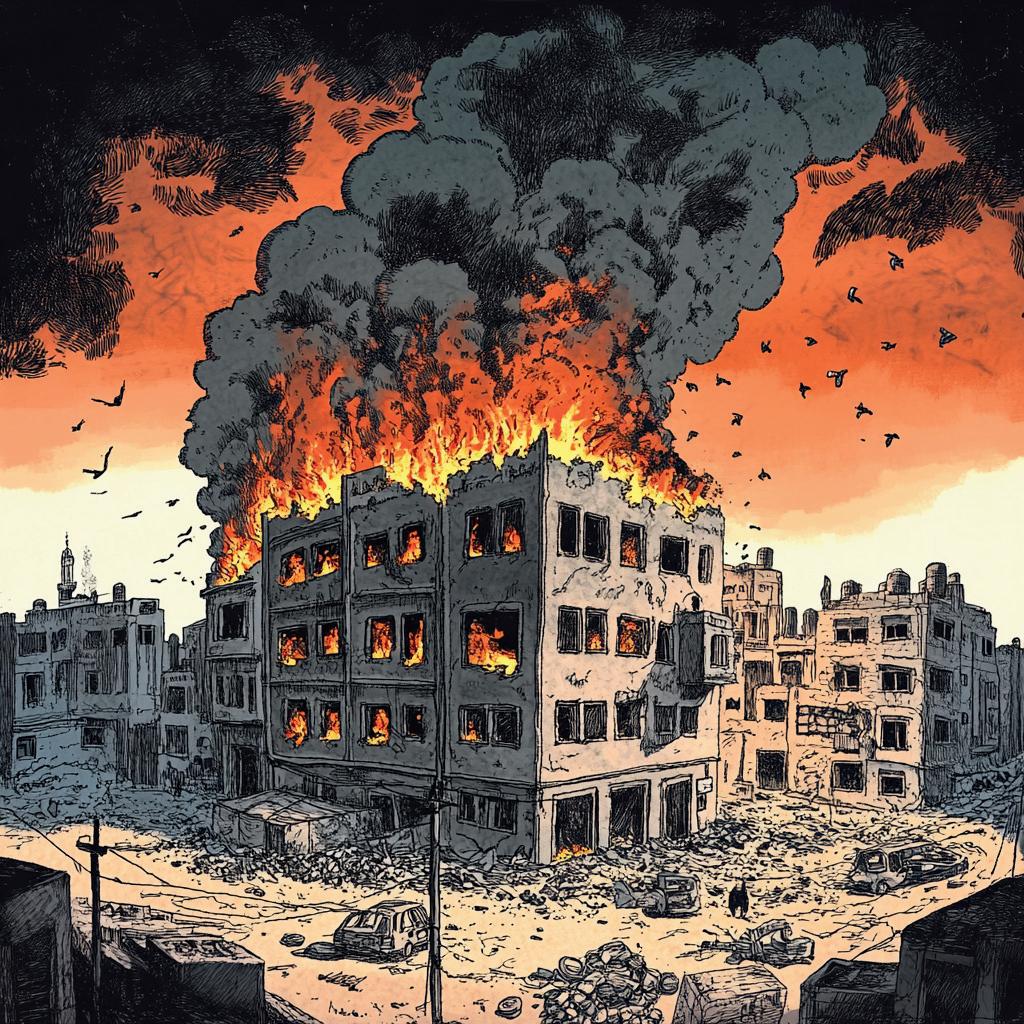
2024 has shown us that the world is not governed by justice or peace, but by the whims of nuclear-armed bullies. They are the ones who decide which wars matter and which lives are worth saving, while the rest of the world waits in vain for the United Nations to act.
As we enter 2025, we must realize that we cannot continue relying on a broken system. The world needs real leadership not hollow promises and empty meetings. We need to take control of our future before the fire consumes us all. Congo, Sudan, Palestine, and Ukraine, these are not isolated events. They are symptoms of a world in crisis, and we are all responsible for putting out the flames.
Let us hold on to one simple truth: *all human beings have the right to be alive.* That should be the UN’s only guiding principle, yet they have failed even this. The time has come for bold action, not from the UN, but from those who are truly committed to peace. The world must wake up before it’s too late.
As we step into 2025, *People of Africa* magazine reflects on the journey we took together over the past year. Through four editions, we shared stories of love, joy, and pride in being African, celebrating our rich heritage and vibrant cultures. Now, as we enter the new year, our focus shifts toward health and wellness particularly nutrition as more people across the continent turn to diets that blend traditional African wisdom with modern insights.
In 2025, the African diet is embracing more plant-based options and health-focused routines tailored to the continent’s diverse cultures and climates. Whether you’re seeking to make healthier choices or looking to enhance your winter wellness, these trends are the ones to watch in the year ahead. People of Africa winter issue will guide you, to the better you...
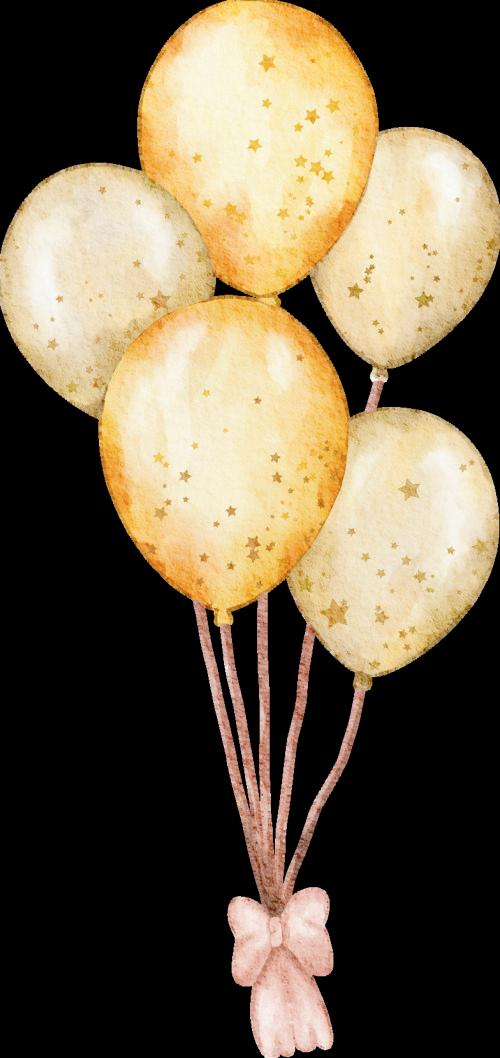






























The global movement toward plant-based diets has sparked a renewed interest in traditional African ingredients—many of which are naturally nutrient-dense and offer incredible health benefits. More Africans are looking to staples like millet, teff, moringa, and baobab as the foundation for nutritious, plant-based meals. Millet and teff, ancient grains rich in fiber and essential minerals, are making a comeback in dishes ranging from breakfast porridge to gluten-free breads. These grains not only provide sustainable energy but also support healthy digestion and help maintain balanced blood sugar levels. Teff, for example, is packed with iron, making it an excellent choice for those looking to boost their intake of this essential nutrient.

Meanwhile, moringa affectionately known as the “miracle tree” has gained international acclaim as a superfood, thanks to its high levels of vitamins A and C, calcium, and antioxidants. It can be added to smoothies, soups, or brewed as tea. And let’s not forget **baobab**, long cherished for its potent vitamin C content and its ability to strengthen the immune system. Baobab powder can easily be incorporated into smoothies, salad dressings, or even energy bars. Incorporating these ingredients into daily meals is more than a health trend—it’s a reconnection with the land and the wisdom of our ancestors, who knew the value of these superfoods. This growing movement towards plantbased eating encourages healthier lifestyles while promoting sustainability and self-reliance.
Although many African countries experience the end of the year as a hot season, African diasporas around the globe often face the challenges of colder winters. Staying active and maintaining health during these months is essential. As we enter 2025, the focus will be on strategies that not only keep us moving but also help our bodies adapt to seasonal changes, keeping vitality at the forefront.
To stay active during colder months, experts recommend **indoor exercises** such as *
Yoga , Pilates, or simple home-based workouts. These exercises not only maintain physical fitness but also improve flexibility, balance, and mental well-being. Additionally, African dance- inspired fitness routines are gaining popularity as a fun, cultural way to stay active. The high- energy moves, paired with the uplifting beats of African rhythms, make exercising both enjoyable and meaningful.
In addition to staying active, mindful nutrition plays a critical role in winter wellness.
Foods like stews and soups can be both nourishing and healthy. Traditional African dishes like bean stews, lentil curries, and leafy greens cooked with garlic and ginger are not only warming but also rich in antioxidants and immune-boosting nutrients. Hydration** remains key even in colder weather. Drinking plenty of water is essential to stay hydrated and maintaining skin health.
Herbal teas made from **moringa**, **hibiscus**, or **rooibos**
can further enhance hydration while offering health benefits such as improved circulation and digestion. Finally, boosting **immune health** is a top priority during the winter months. Recipes that incorporate ginger, garlic, turmeric, and other spices— commonly found in African cuisine—are natural ways to enhance immunity. These spices not only add rich flavors but also help the body fight off seasonal illnesses and promote overall wellness.
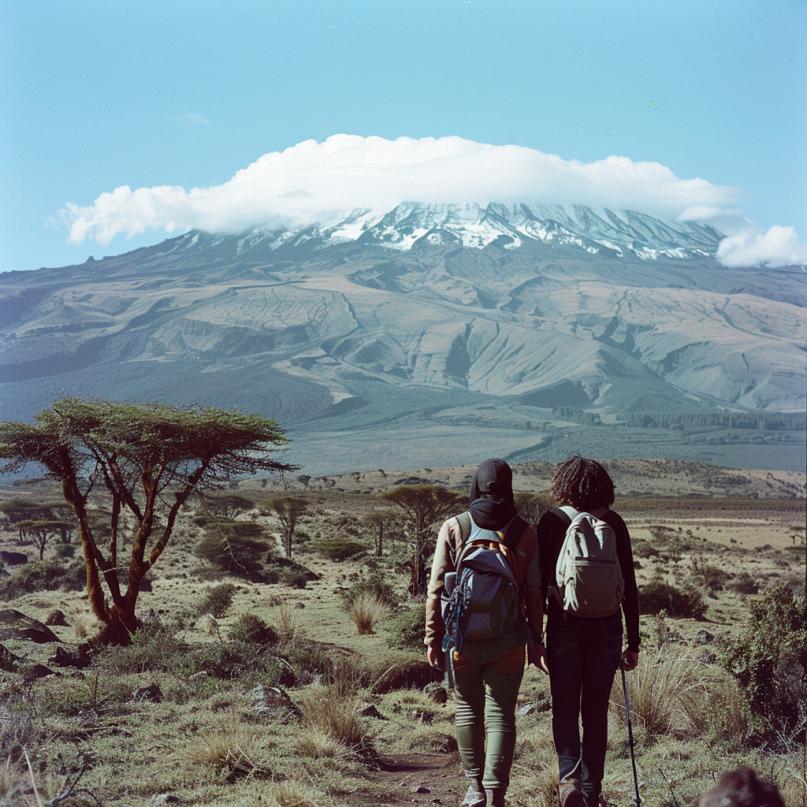
Incorporating these wellness trends into your lifestyle doesn’t require major changes. Simple steps,suchasaddingmoreplantbased meals, staying active indoors, and being mindful of hydration, can have a profound impact on your health. As we move through 2025, one message is clear: **prioritize wellness, reconnect with nature, and embrace the richness of traditional African diets for a healthier, more balanced year**. The future of African wellness is rooted in the wisdom of the past, andbyblendingmodernnutrition with indigenous ingredients, we can look forward to a year of vitality,renewal,andhealth.


As the world turned the page from 2024 to 2025, Africans across the continent and beyond united in a resplendent tapestry of tradition, joy, and cultural pride. From the bustling markets of Marrakech to the rhythmic heartbeats of Accra, every region came alive to celebrate the dawn of a new year. This collective spirit of unity and festivity serves as a powerful reminder of the strength and vibrancy woven into the very fabric of African culture.












**North Africa’s Festive Spirit**



West Africa’s Vibrant Celebrations**









In the lively streets of Morocco, the sweet scents of pastries filled the air as families gathered Here, traditions run deep, with loved ones sharing not just meals but also stories, laughter, and an unbreakable bond. As night fell, Egyptians flocked to the majestic Nile, where fireworks lit up the sky, transforming the waters into a canvas of celebration, while music and laughter mingled with the gentle breeze. Meanwhile, the rhythmic strumming of traditional music in Algeria accompanied the refreshing taste of mint tea, inviting all to revel in the moment.
Across the vibrant landscapes of West Africa, celebrations echoed with the sounds of drums and dance. In Ghana, streets erupted with energy as traditional drumming resonated, each beat celebrating the resilience and joy of its people. Young and old moved together, embodying the spirit of togetherness that defines this rich cultural heritage.
In Nigeria, the warmth of community radiated as families reunited for heartfelt church services and jubilant feasts. The air buzzed with excitement, where beloved dishes like jollof rice and spicy suya transformed mealtime into a cherished ritual. Laughter intertwined with prayers, weaving a rich narrative of gratitude and hope for the year ahead.




**East Africa’s Cultural Delights**
In Tanzania, the New Year burst forth with the sounds of fireworks and the cheerful chaos of people celebrating in the streets. special prayers and lively music filled the air, complemented by feasts featuring fragrant pilau rice and tender nyama choma (BBQ). These jubilant gatherings reflected the joyous spirit of East Africa, where every meal and song told a story of heritage and community.
On Kenya’s sun-kissed shores, vibrant music festivals and coastal parties pulsated with life. Locals and travelers alike danced under a starlit sky, embodying the essence of African celebration a joyful invitation for everyone to partake in this rich narrative of unity.
**Southern Africa’s Outdoor Fun**
In Southern Africa, the beloved tradition of braai (barbecue) brought communities together in South Africa. Families gathered around open flames, sharing not just food but also stories and laughter, reminding us that the heart of Africa beats strongest in unity. Each meal was a celebration of life, love, and the deep connections that bind us.
In Zambia, cultural performances transformed stages into vibrant expressions of identity, where traditional dances told stories of ancestors, resilience, and community. These performances enveloped everyone in a shared sense of pride, showcasing the rich tapestry of Zambian heritage.
**Pan-African Traditions**
Throughout this vibrant celebration, a common thread emerged: family. Across the continent, reunions were prioritized as Africans honored their ancestors and reflected on the past year. This tradition of introspection and goalsetting illuminated the deep connection to heritage and the aspirations for a brighter future.
Whether in bustling cities or serene villages, the spirit of family and togetherness transcended borders, reminding us that we are all part of this beautiful mosaic.
As we step into 2025, Africa stands poised for growth and innovation:
- **Economic Growth:** Projections indicate a robust 4% growth, reflecting the tenacity and creativity of African entrepreneurs.
**Cultural Exchange:** Flourishing collaborations among African nations will further embrace our diversity and commonality, fostering an environment where cultures blend and thrive.

**Innovation Hub:** Africa continues to rise as a beacon of entrepreneurship, where creative minds converge to shape a dynamic future filled with potential.
**Global Influence:** African voices are amplifying on the world stage, enriching global conversations with authenticity, wisdom, and a unique perspective.
Conclusion
As we embark on the journey of 2025, let us carry forward the richness of our cultural heritage, the strength of our communities, and an unwavering spirit of optimism. This New Year is not just a transition; it’s a celebration of our shared identity as Africans, bound by love, resilience, and a commitment to uplifting one another. Here’s to a prosperous and joyous New Year, where every celebration is a tribute to the beauty of our diverse cultures
What to expect in 2025
Intertwined as one, reminding us that together , we are unstoppable !

As we step into the promising embrace of a new year, it’s customary to reflect on personal aspirations—perhaps shedding a few pounds or finally committing to that long-anticipated fitness regimen. But what if, instead of focusing solely on self-improvement, we expanded our resolutions to encompass the greater good? This year, let’s challenge ourselves to craft resolutions that resonate not just within our own lives but ripple through our communities, nurture our environment, and ignite social progress across the African continent.

In an era defined by climate crisis, the call for environmental stewardship has never been more urgent. As Africans, we are privileged to inhabit a continent rich in biodiversity, yet many of our ecosystems are under threat. This year, consider adopting simple yet effective practices that contribute to conservation efforts. Start with the basics: reduce single-use plastics, support local clean-up initiatives, or engage in tree-planting campaigns. Even the smallest acts such as opting for public transportation or supporting sustainable agriculture can culminate in significant change. Organizations across Africa are championing conservation efforts, from community-based wildlife protection in Namibia to sustainable fishing practices in Senegal. Resolve to educate yourself about these initiatives and get involved; your participation can be a powerful catalyst for positive environmental change.
Our individual journeys are intertwined with the narratives of those around us. This year, embrace the spirit of mentorship and volunteerism as a cornerstone of your resolutions. Share your skills, insights, and experiences to uplift others, fostering a culture of support and collaboration.

Consider dedicating a few hours each month to mentor a young person in your community. Whether it’s offering career advice, tutoring in academic subjects, or providing life skills training, your guidance can inspire a future generation. Organizations like the African Leadership Academy and various local NGOs are constantly seeking volunteers, providing opportunities for you to make an impact. Remember, every interaction can ignite a spark of change. The act of sharing your knowledge not only empowers others but enriches your own life, creating a tapestry of connection that strengthens communities.

As we enter a new economic landscape, supporting Africanmade products has emerged as a powerful resolution for the new year. By choosing to invest in local brands, artisans, and industries, you’re not just enhancing your wardrobe or pantry you’re contributing to the economic empowerment of your community.
Explore the vibrant world of African design, where creativity and craftsmanship shine through textiles, jewelry, and art. Seek out local markets or online platforms that showcase these products. Every purchase is a vote for sustainability, originality, and the resilience of African entrepreneurship.
Moreover, consider collaborating with local businesses to promote their offerings. This can be as simple as sharing your favorite finds on social media or organizing community events that highlight African creators. By championing local talents, we foster economic growth and cultural pride one resolution at a time.
As we embark on this new chapter, let’s pledge to cultivate resolutions that transcend the personal and touch upon the communal. In 2025, let’s forge connections that uplift our communities, protect our environment, and ignite social progress. In a world that often feels fragmented, these resolutions serve as reminders of our collective potential. Together, we can weave a narrative of hope, resilience, and empowerment a resolution with impact. So, as you pen down your goals this year, dare to envision a better world for all, where your aspirations contribute to the greater good. Here’s to a year of transformative resolutions because true fulfillment lies not just in personal achievements but in the impact we leave on our communities and the planet.



U.S. presidential elections often seem like a spectacle unfolding within American borders, but their impact reverberates across the world particularly among the African diaspora and on the African continent itself. In a country renowned for its outsized influence on global issues, decisions made by American leaders often affect economies, foreign policies, and social dynamics far beyond their own shores.
For first generation African “youth” voters in the diaspora, the U.S. elections present a dilemma. The “safe ticket” choices of the Democratic Party in 2016 and 2024, meant to reassure moderates, have left young voters and progressiveminded Africans disillusioned. This demographic yearns for transformative leaders willing to confront not only domestic issues but also the global impacts of U.S. foreign policy. For them, the echoes of American policies resound back to Africa in real and consequential ways impacting everything from trade policies and climate initiatives to international aid and human rights advocacy.
In both 2016 and 2024, the Democratic Party opted for “safe” vice-presidential picks Tim Kaine in 2016 and Tim Walz in 2024 hoping to steady the party’s image and appeal to conservative- leaning voters. But this strategy may have backfired by sidelining a vital, energetic demographic, including young African Americans and members of the diaspora who long for bold leaders committed to addressing not only social justice at home but international challenges that affect their communities and families abroad.
These voters are acutely aware of how U.S. policies shape the economic and political realities in Africa. When the U.S. falters on climate change or global health initiatives, it often spells hardships for nations already grappling with systemic issues. The choice to play it safe in elections, then, signals to diaspora voters a reluctance to confront the very policies that undermine progress in their ancestral lands.

For decades, the Democratic Party claimed to represent a wide array of interests under a “big umbrella,” but cracks are beginning to show. This fractured coalition now risks losing not only young progressives but also African diaspora voters who see firsthand how U.S. decisions affect African nations’ futures. The absence of strong stances on climate justice, economic inequality, and foreign policy alienates this crucial group, compelling some to explore alternatives, such as third-party candidates, whose platforms often include more progressive foreign policy. In states like Michigan, the Green Party’s rise highlights a desire among these voters for leaders who genuinely address issues affecting African and other immigrant communities. For African voters, this shift indicates a yearning for policies that connect more deeply with global concerns rather than the inward-focused “Immigration” rhetoric dominating recent administrations.
Gender, Division, and the African Diaspora: A Perspective on Leadership
In the 2024 U.S. election, gender remains a complex factor. America’s reluctance to elect a woman to the presidency reflects a broader cultural struggle, not unlike the debates surrounding leadership across the African continent. African women leaders like Ellen Johnson Sirleaf of Liberia and Sahle-Work Zewde of Ethiopia exemplify what’s possible when nations embrace diverse leadership. The African diaspora in the U.S. can’t help but notice the stark contrast: while African countries advance toward inclusivity, the U.S. remains bogged down by archaic stereotypes and a profound reluctance to embrace female leadership. This reluctance has consequences. Young African diaspora women especially feel disillusioned with a system that seems to stymie their ambitions, not only in politics but also in other leadership spaces. As they watch women rise in Africa, the limitations they encounter in the U.S. feel all the more frustrating and, at times, hypocritical for a nation that claims to champion global democracy and gender equality.

For Africa, the U.S. election is not just a remote event but a seismic shift with local implications. U.S. foreign aid policies, trade agreements, and even military engagements all have direct impacts on African countries. For instance, shifts in climate policy influence funding for clean energy initiatives across the continent. Likewise, the U.S.’s stance on immigration affects African families split across borders, impacting remittances that support education, healthcare, and infrastructure back home.
African diaspora voters in the U.S. understand that they are voting not just for domestic policies but for the fates of their families, their communities, and even the futures of African nations. As a result, when the Democratic Party takes a “safe” route, it risks losing the allegiance of voters who want to see America stand firm on global justice. For these voters, the lack of bold action on issues like climate change, human rights, and trade is a failure that reverberates back to Africa, where U.S. influence often spells the difference between stability and unrest.
Looking to the Future: Can the Democrats Reclaim the Diaspora?
To win back African diaspora voters, the Democratic Party must reckon with its fractured base. This is more than an ideological shift; it’s an acknowledgment of a profound need for leadership that understands and integrates global responsibility. For the African diaspora, every U.S. election represents a call for leaders who respect and uplift global communities rather than isolating themselves under the guise of national interests. In the years ahead, the Democratic Party has the chance to recalibrate its approach, appealing not only to younger voters but also to diaspora communities that understand the transformative power of bold leadership.

TAs the question of whether the U.S. is ready for a female president lingers, the larger issue may be whether America can rise to meet the global challenges its policies create. For the African diaspora, the time is ripe for a vision that moves beyond borders a vision that truly embodies the values of unity, justice, and progress. And for African leaders, this is a reminder that their influence can and should extend to their citizens abroad, encouraging a new wave of leadership that prioritizes collective strength, resilience, and shared destiny.
As we step into 2025, the global fashion landscape is poised for an evolution, one that draws inspiration from the rich and diverse cultures of Africa. With its intricate textiles, vibrant colors, and deep-rooted traditions, African fashion is not merely an aesthetic choice; it is a powerful narrative of history, identity, and resilience. In this article, we will explore the history of African fashion across various regions Northern, Eastern, Western, and Southern Africa highlighting how each region’s unique fabrics and styles contribute to a global runway that celebrates African uniqueness.

Northern Africa is a melting pot of cultures, influenced by centuries of trade, conquest, and migration. The region is renowned for its luxurious fabrics, such as **silk and cotton**, often adorned with intricate embroidery. Countries like Morocco and Egypt showcase a rich tradition of textile production, where artisans weave stories into every piece.
One of the standout fashion trends from Northern Africa is the **Kaftan**, a flowing garment that embodies elegance and versatility. Traditionally worn during special occasions, modern iterations of the Kaftan have made their way onto international runways, often featuring bold patterns and contemporary cuts. As winter approaches, expect to see variations that incorporate heavier fabrics, layered with stunning **turbans** and **shawls**, merging functionality with style.


In Eastern Africa, particularly in countries like Kenya and Tanzania, fashion is characterized by kanga and kitenge fabrics—brightly colored textiles often adorned with bold prints and meaningful proverbs. These fabrics are not just clothing; they are a means of storytelling, expressing the wearer’s identity, culture, and values. As we embrace the colder months, Eastern African designers are creatively adapting these traditional fabrics into winter wear. Imagine vibrant kitenge jackets paired with cozy knitwear or kanga-inspired ponchos that make a statement while keeping you warm. Additionally, accessories crafted from beads and other local materials are being integrated into winter wardrobes, adding a touch of Eastern African flair to global fashion trends.
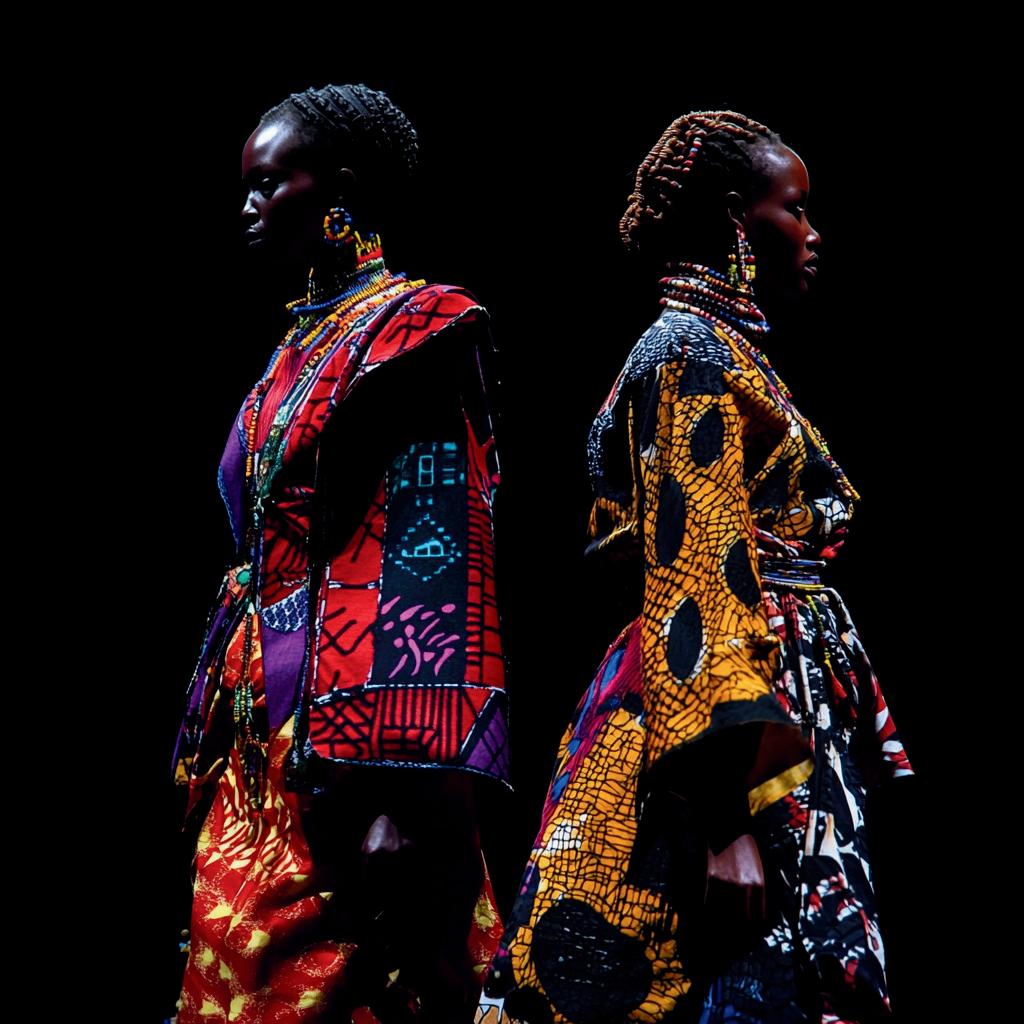
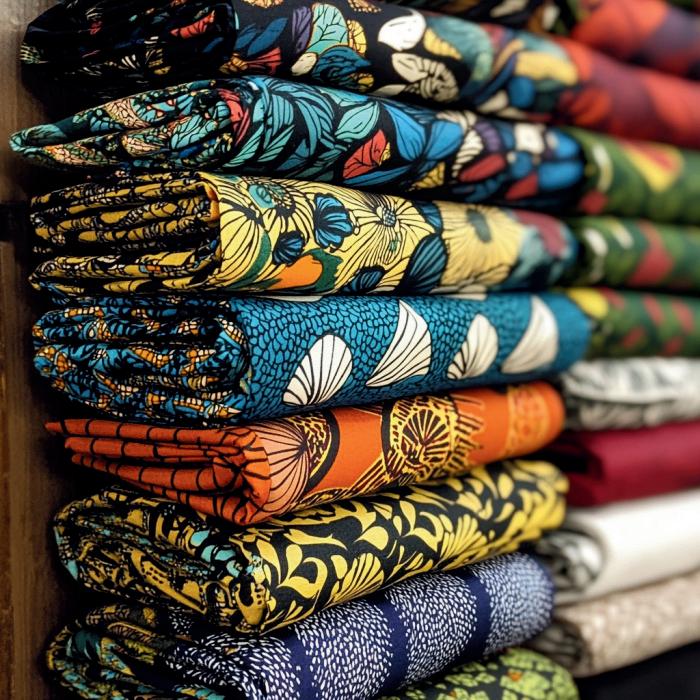
Western Africa stands as a beacon of creativity in the fashion world, largely due to the popularity of **Ankara** and **Kente** fabrics. Known for their bold colors and intricate designs, these textiles are celebrated not just for their beauty but for their cultural significance. Kente cloth, for instance, is a symbol of prestige and is often worn during important ceremonies. In 2025, expect Western African designers to dominate winter fashion with pieces that blend traditional textiles with contemporary silhouettes. Ankara coats and Kente wraps are likely to grace runways, showcasing how traditional fabrics can be reimagined for modern aesthetics. Additionally, layering techniques, such as pairing Ankara trousers with oversized sweaters, will not only provide warmth but also celebrate the versatility of African textiles.
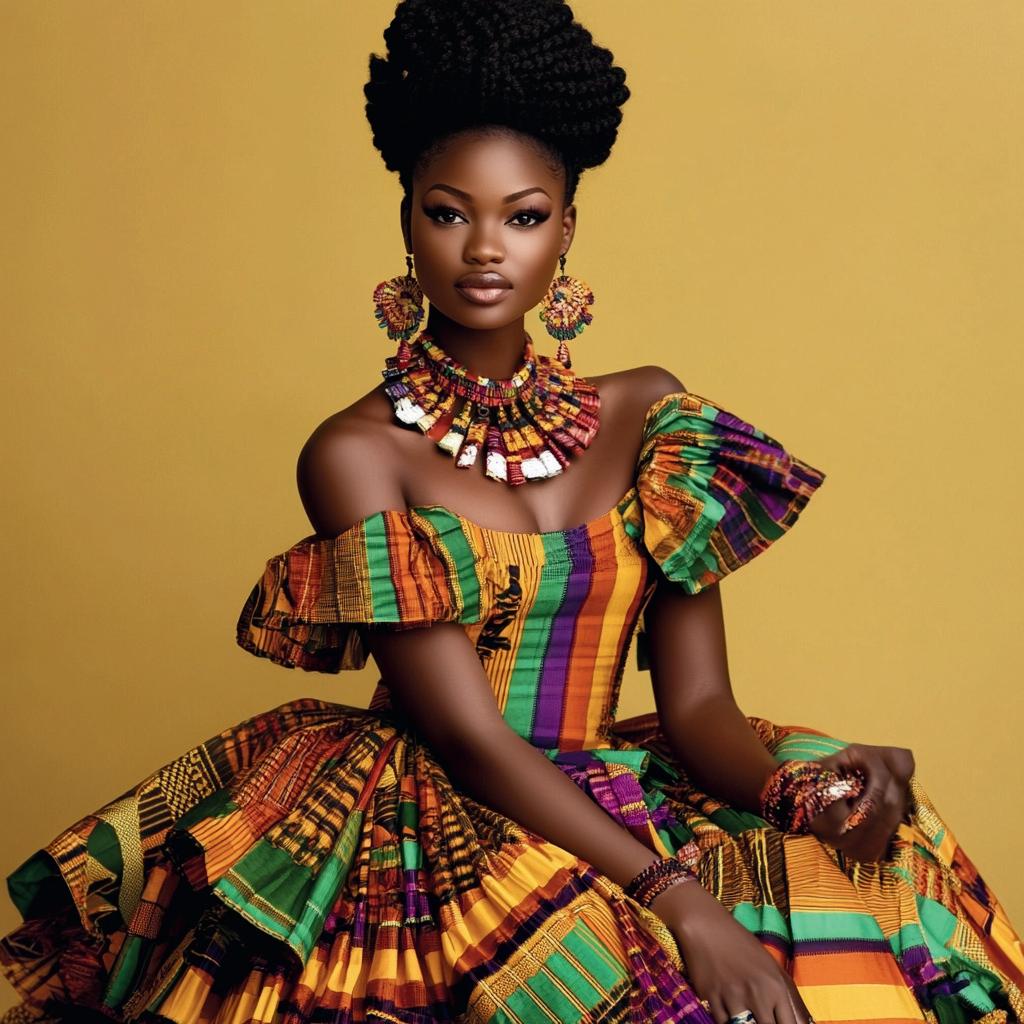

Southern Africa, particularly South Africa, is a hub of fashion innovation, where diverse cultures meet to create a unique style landscape. Designers like Gert-Johan Coetzee and Thula Sindi are gaining international acclaim for their ability to merge traditional elements with modern design philosophies. One of the key trends emerging from this region is the use of **Shweshwe** fabric—a printed cotton fabric known for its vibrant patterns. As winter unfolds, Shweshwe will find its way into tailored jackets and skirts, providing warmth without sacrificing style. Additionally, South African fashion is increasingly focusing on sustainability, with designers sourcing local materials and employing eco-friendly practices, setting a precedent for responsible fashion in 2025.


As we move into 2025, the world of fashion stands to benefit immensely from Africa&’;s unique heritage, craftsmanship, and innovative spirit. Each region’s distinct style, rooted in history and cultural significance, offers a wealth of inspiration for designers and fashion enthusiasts alike. By embracing African fashion, we celebrate not only the artistry behind the garments but also the stories they tell. As the global fashion industry becomes more inclusive, let us champion African designers, fabrics, and styles that have the power to transform runways around the world. In doing so, we pave the way for a richer, more diverse fashion narrative that honors the past while inspiring the future.
In this new year, let’s not just wear our fashion; let’s wear our history, our culture, and our pride. The beauty of African fashion lies not just in its aesthetic appeal but in its profound ability to connect us to our roots and each other.


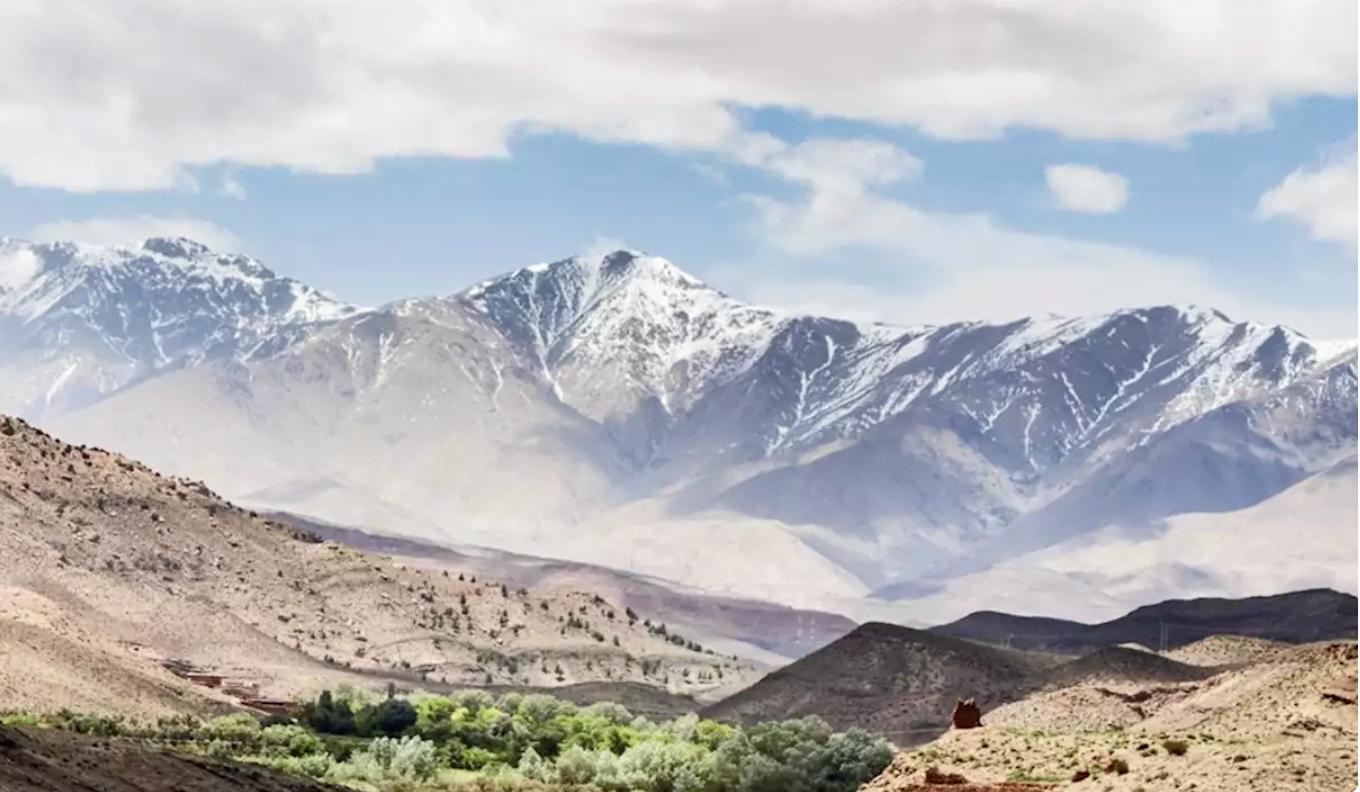
Imagine wandering through the majestic Atlas Mountains, where snow-capped peaks contrast with the sun-kissed valleys below. Morocco is not just about bustling souks and vibrant cities; it offers a winter wonderland for those seeking solace in nature. Skiing in **Oukaïmeden**, the highest ski resort in Africa, or exploring charming Berber villages, Morocco’s winter landscape is a treasure trove for adventurers and peace seekers alike. After a day on the slopes, unwind in a traditional riad, indulging in Moroccan mint tea while basking in the warmth of its hospitality.

Known as the “Land of a Thousand Hills,” Rwanda beckons travelers to explore its breathtaking landscapes. The **Volcanoes National Park**, shrouded in mist, is home to the endangered mountain gorillas—an experience that is both thrilling and humbling. Winter is the ideal time for trekking through the lush, green forests, where the air is crisp, and wildlife is abundant. Engage with local communities through cultural experiences, from traditional dances to artisan workshops, and savor the unique flavors of Rwandan cuisine.
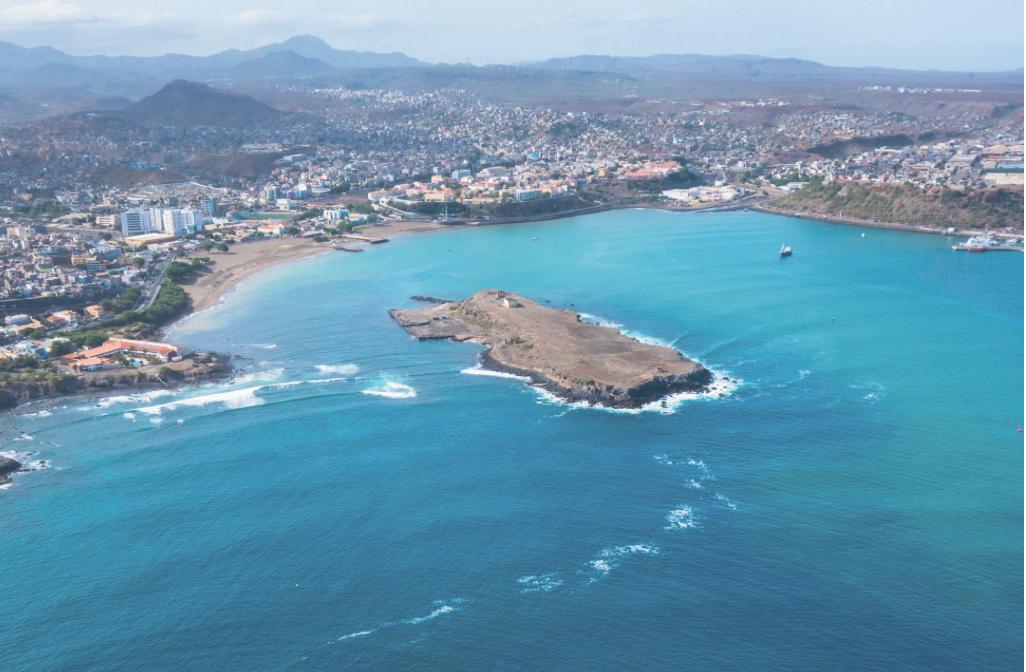
Nestled off the northwest coast of Africa, Cape Verde is a hidden gem known for its stunning fishing villages and beautiful beaches. The islands boast a laid-back vibe, where the ocean breeze carries the scent of grilled fish and the sound of traditional morna music. In winter, the mild temperatures are perfect for exploring the vibrant markets of **Mindelo** or taking a boat trip to discover the untouched beauty of **São Vicente**. For a taste of adventure, hike the volcanic landscapes of **Fogo Island** and enjoy breathtaking views from its summit.

Madagascar is a world unto itself, with ecosystems and wildlife found nowhere else on the planet. This winter, explore the otherworldly landscapes of **Avenue of the Baobabs** or venture into the **Andasibe-Mantadia National Park** to encounter lemurs in their natural habitat. The island’s unique flora and fauna are complemented by its rich cultural tapestry, from traditional dances to vibrant markets. Whether you’re relaxing on the stunning beaches of **Nosy Be** or hiking through the lush rainforests, Madagascar promises an unforgettable escape.

Namibia’s striking contrasts between the arid deserts and the Atlantic coastline create a stunning backdrop for any winter traveler. Visit the towering dunes of Sossusvlei, where the golden sands meet the vivid blue sky. The Skeleton Coast, with its dramatic shipwrecks and rugged landscapes, offers a sense of isolation and beauty that is unmatched. Experience the rich culture of the Himba people or embark on a wildlife safari in **Etosha National Park, where game viewing is spectacular yearround.

Winter is an opportune time for a safari in Tanzania, where the **Serengeti** comes alive with the Great Migration. Witness thousands of wildebeest and zebras traversing the plains in search of greener pastures. After an exhilarating day on safari, unwind on the idyllic beaches of **Zanzibar**, where crystal-clear waters and white sandy shores invite relaxation. Explore the rich history of Stone Town or indulge in the spice markets for a taste of local flavors.

Sudan, often overlooked, is a treasure trove of ancient history waiting to be explored. Visit the **Pyramids of Meroë**, where a rich civilization once thrived. The **Nile** runs through this captivating landscape, providing a stunning contrast to the desert scenery. Engage with local tribes and experience traditional music and dance during winter festivals that showcase the country’s vibrant heritage.

The Republic of the Congo offers an authentic adventure for the intrepid traveler. Discover the stunning landscapes of **Odzala-Kokoua National Park**, one of the largest rainforests in Africa. Experience ecotourism at its best while tracking gorillas and exploring the rich biodiversity of the region. The warm winter months are perfect for exploring local communities and learning about their sustainable practices.

Ghana is a vibrant destination rich in history and culture. In winter, immerse yourself in the colorful festivities that celebrate Ghanaian traditions. Explore the **Cape Coast Castle** and the **Ashanti Kingdom**, where you can learn about the poignant history of the transatlantic slave trade. Engage with local artisans in bustling markets, and don’t miss the chance to savor mouthwatering dishes like jollof rice and kelewele (spicy fried plantains).
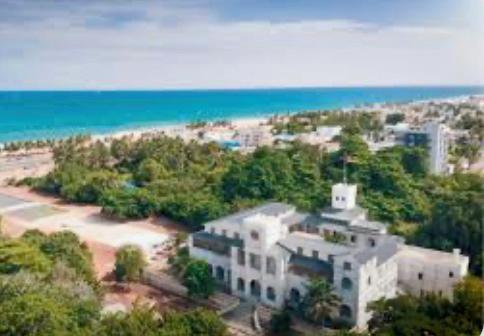

Togo offers a blend of coastal beauty and vibrant culture.
Visit **Lome**, where the lively markets and beaches provide a taste of local life. Engage with artisans creating beautiful batik fabrics or indulge in the culinary delights of Togo’s diverse cuisine.
Senegal is a cultural hub known for its music, art, and cuisine.
Explore the island of **Gorée**, a UNESCO World Heritage site, and learn about its historical significance. Attend lively music festivals and experience the warm hospitality of Senegalese culture, where every meal is a celebration.
To further enrich your winter escape, look for local festivals and cultural events taking place during your visit. From the vibrant Fes Festival of World Sacred Music** in Morocco to the Ghana Carnival**, these events offer an immersive experience that connects travelers with the heart and soul of African culture. As you plan your winter escape, consider these stunning destinations that highlight the beauty and diversity of Africa. Each country offers unique experiences that celebrate local traditions and natural wonders, ensuring that your holiday will be unforgettable. Whether you’re seeking adventure, relaxation, or cultural enrichment, Africa’s hidden gems await your exploration this winter.

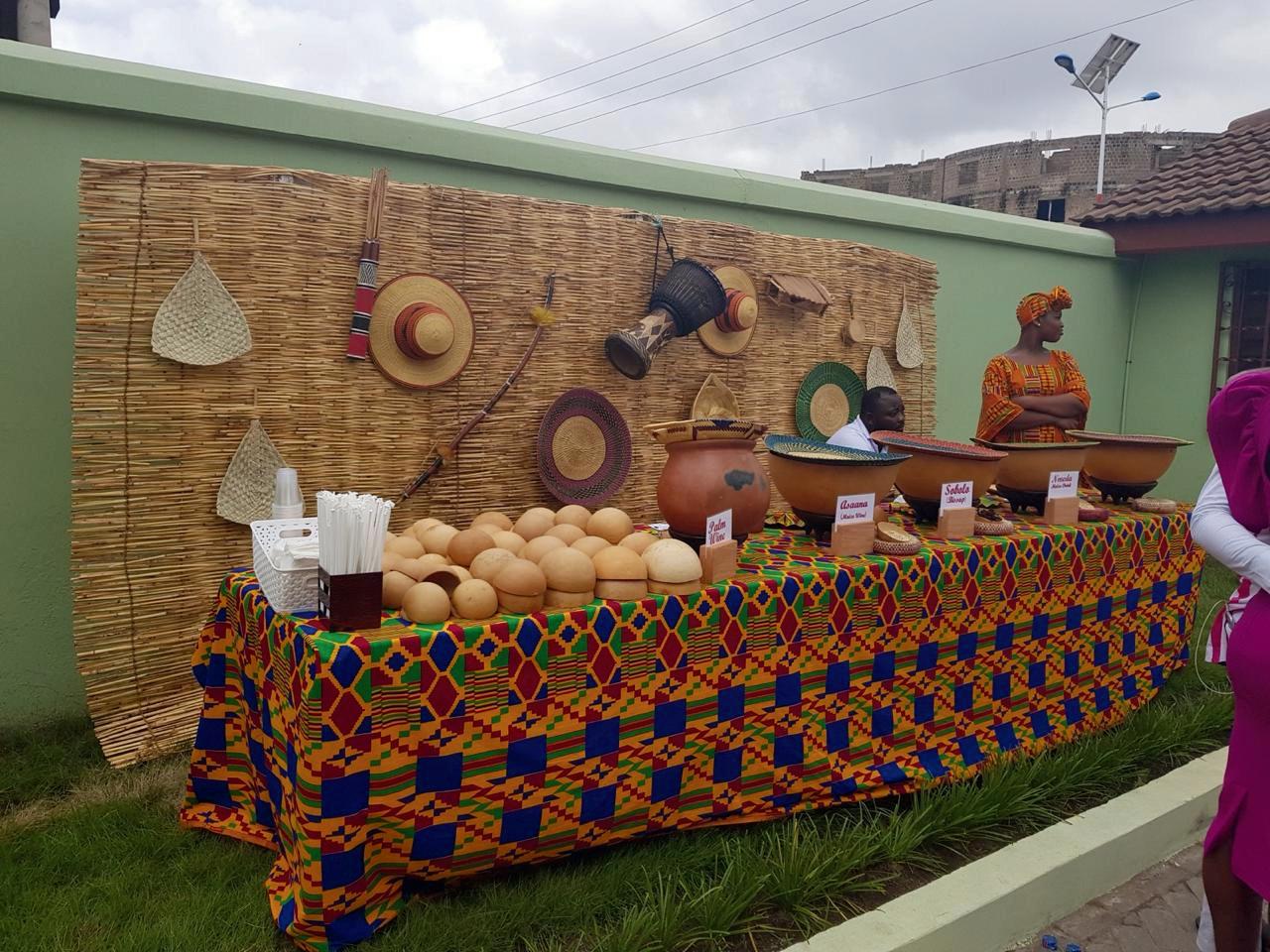



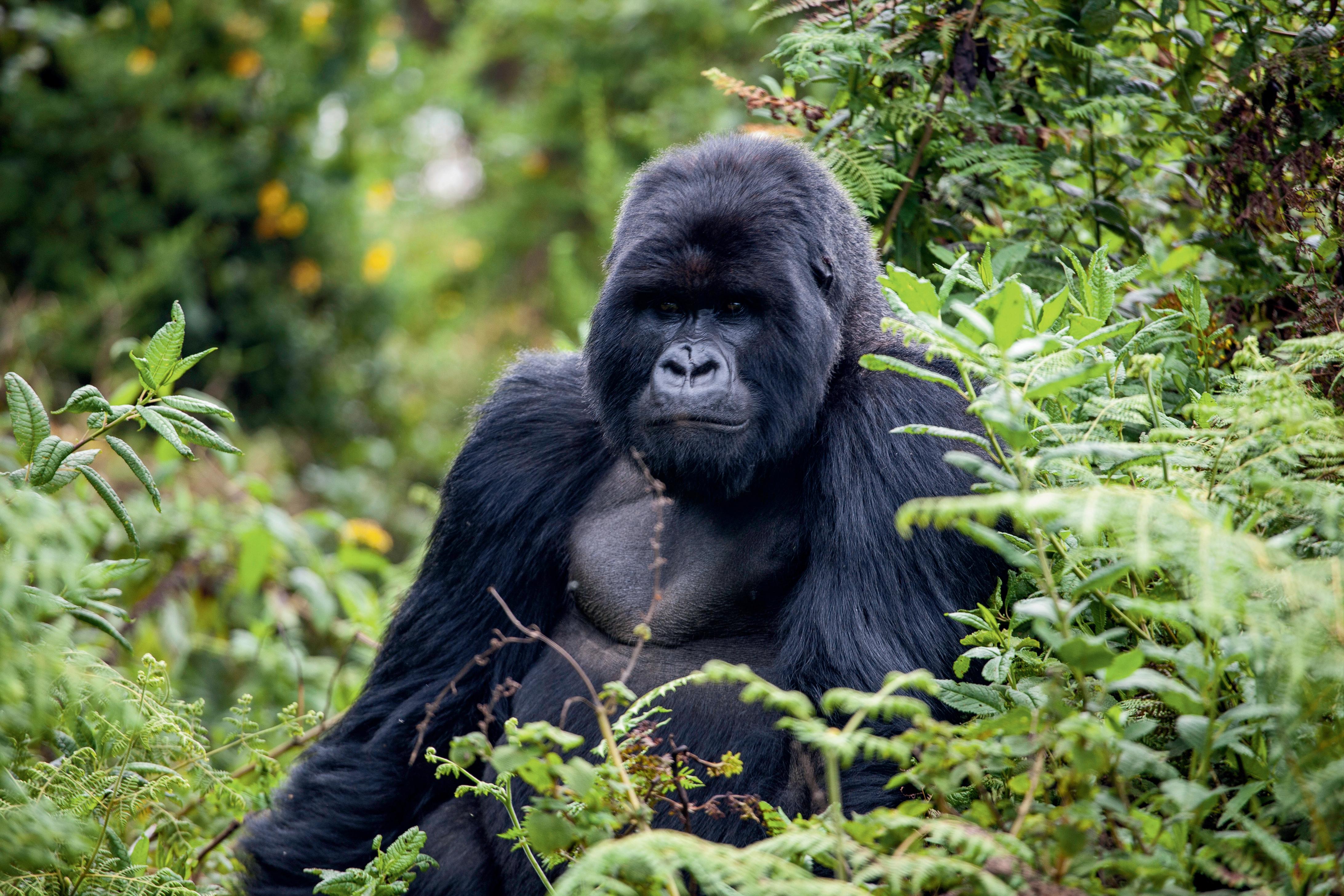



““Being an actress is incredibly important to me. I take it seriously. I’m not chasing fame; what I long for is to showcase my talent and educate others through this vibrant light that God has blessed me with. This is my job, and I love it,” Hidaya Nuru Adam shared with us, her smile radiant as she spoke, embodying both pride and purpose.
Despite her passion and dedication, Hidaya acknowledges the challenges she’s faced in Tanzania, where acting is sometimes viewed as an unconventional career. “There are a few bad apples that give the industry a bad name, and people think acting isn’t a ‘real’ job. But for me, it’s everything. It’s therapy, my profession, and what makes me happiest,” she said with conviction. To her, acting is more than entertainment; it’s a powerful platform to educate and communicate important messages to the public.
“I love my job. Being on set fills me with joy, and I approach it with utmost seriousness,” she emphasized, flashing a warm smile to underscore her point. For Hidaya, her work is not just a passion—it’s a calling.
Hidaya’s unexpected journey into the world of acting began in 2011 when two prominent producers noticed her on social media and saw potential in her. “They saw my photo and wanted to work with me,” she recalled, excitement and nervousness still fresh in her voice.
Despite initial fears about her stutter, she took the plunge, debuting in *Siri Ya Mtungi*, a TV series produced by Media for Development International (MFDI) and funded by USAID. In the series, she played Nusura, a young woman who marries an older man after discovering her boyfriend’s repeated infidelity. This role not only launched her career but also put Tanzanian film on the map, showcasing a new level of professionalism and storytelling that caught the world’s attention.
In 2014, Hidaya took on another pivotal role in *Daddy’s Wedding*, acting alongside Jenerali Ulimwengu, one of Tanzania’s most celebrated actors. Filmed in the stunning Saadani National Park, the movie tells the story of Jane, a young woman who marries an older widower with five grown children. Reflecting on the experience, Hidaya said, “Playing Jane taught me how to peel back the layers of my character, like an onion, to find what works best for each role.”
Since then, Hidaya has continued to make her presence felt in the industry. In *Nuru*, she portrayed Naomi, a university student struggling to meet her father’s expectations, while in *Koneksheni*, she played Imelda, a woman navigating the emotional turmoil of her husband’s infidelity and subsequent divorce. Each role, she says, has helped her grow as an actress and as a person. But acting isn’t her only pursuit. Hidaya is a woman of many talents. Known also as Hidaya Maeda, she’s a wife, mother, entrepreneur, and former Tanzanian catwalk diva. At 5’8”, she has walked the runway for over 30 fashion shows, representing top designers like Ally Rhemtula, Mustafa Hassanali, and Ailinda Sawe. She also competed in and won Miss International Tanzania in 2009, through the Miss Universe pageant, which opened doors for her to become a model coach and judge.

“I want to be a voice for positive change,”

“I never imagined I’d be an actress,” Hidaya mused. But her career trajectory proves that talent and perseverance can open doors to unexpected opportunities. As an emerging fashion designer and seasoned makeup artist, she’s not just diversifying her career she’s continuously reinventing herself, always eager to learn and grow. Hidaya also shared her vision for the future. “I want to be more than just an actress; I want to be a voice for positive change,” she said. Although she has no interest in entering politics like some of her peers, she’s focused on using her platform to uplift children and contribute to humanity’s greater good. “Humans need each other to thrive, and I want to be part of making this world a better place.”
In her spare time, Hidaya enjoys exploring her creative side through design, spending hours honing her craft as an aspiring fashion designer. She’s also an avid traveler and a skilled cook, constantly finding joy in new experiences and passions. Whether on screen, behind the scenes, or in her everyday life, everything Hidaya does is driven by love for her craft, her family, and her own self-expression.
With a career that spans continents and industries, Hidaya Nuru Adam is a testament to Tanzanian talent at its finest a woman who doesn’t just perform but also educates, creates, and inspires.
As our interview came to a close, we asked her what Africa means to her. Smiling, she replied, “Just one word? I have so many. But if I had to choose one, I’d say Africa is everything to me.”
At *People of Africa*, we’re honored to share the stories of talented individuals like Hidaya, who remind us of the power of passion, resilience, and creativity. Happy end of the year!.

Each year, the Ballon d Or crowns the “world’s best footballer” yet for all its international prestige, only one African player Liberian George Weah in 1995 has ever won the award. This milestone made Weah both the first and only African and the first non- European player to claim the title. Before that groundbreaking moment, the award was strictly limited to European players, known officially as the “European Footballer of the Year.” It wasn’t until 1995 that the rules broadened to include players worldwide, though only those playing in European clubs were eligible. In 2007, the floodgates truly opened, allowing the Ballon d’ Or to consider players from any league around the world. But more than two decades since these changes, only one African name appears on the list of winners. The closest an African player has come to winning in recent memory was in 2022, when Sadio Mane was runner-up to Karim Benzema. For Africa, a continent rich in talent and sporting passion, the persistent question arises: Why are African players so often left out of the Ballon d’ Or conversation? This question runs deeper than football, hinting at a systemic undervaluing of African athletes despite their immense contributions. When the media wonders, “Why do African players consistently struggle at the Ballon d’ Or awards?” it overlooks the reality that African players have excelled in Europe’s top leagues for decades.

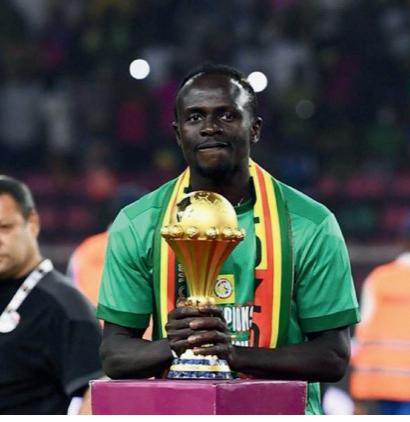

Legends like Didier Drogba, Samuel Eto’o, Yaya Touré, and Mohamed Salah have set records, won championships, and become symbols of skill and endurance. Despite this, their names are frequently overlooked for the sport’s most celebrated individual award. This trend raises the question:
Does FIFA and the larger football community see this as a disparity worth addressing?
George Weah’s experience remains a powerful, if painful, example of this issue. After his historic win, he was met with thinly veiled racism, his achievement headlined by *La Gazzetta dello Sport* with, “Oh, the Black wins the Gold.” Even within his own club, AC Milan, he faced ridicule that he would later describe as a painful reminder of the prejudices African players endure. Weah has since commented that his Ballon d’ Or win, rather than opening doors, left him wrestling with Europe’s biases against African success.

For Africa, the disparity in recognition at the Ballon d’ Or isn’t just about the award itself it’s about equity and respect on the world’s sporting stage. Consider the 100-member voting body, composed of journalists from FIFA’s top 100 countries. These voters each select their top five players from a pre-selected list, with descending points awarded. But who shapes this list? And how many voters understand the pressure and expectations placed on African players who consistently excel across Europe’s top leagues?
Kenyan midfielder Kenneth Muguna has spoken candidly about the challenges African players face in gaining recognition. “African players lack the PR and hype that Europeans and South Americans enjoy at home,” he told Tuko.co.ke. Muguna points to the European media machinery that elevates homegrown players as national heroes while African talent is often met with a less enthusiastic reception. This underscores the importance of Africa not only celebrating but amplifying its own achievements. Imagine if the Africa Cup of Nations (AFCON) were elevated with the same prestige and visibility as the European Championship or
Copa America. What if the world recognized the fierce skill and dedication that drive African players on a global stage?

African players have enriched European leagues for decades, lifting trophies and contributing at the highest levels. Players like Salah and Mane continue to shatter records in the English Premier League, while others like Achraf Hakimi and Riyad Mahrez make waves in France and Italy. Yet, despite their brilliance, the ultimate accolade remains elusive. This reality calls for a rethink: Should Africa wait for the Ballon d’Or’s validation, or should it embrace and elevate its own stage?
For too long, African players have been told their achievements will be acknowledged “one day.”; Perhaps it’s time to stop waiting. Africa has a proud and vibrant football heritage; it’s time for that pride to be reflected in how we celebrate our players. Let’s make the AFCON a tournament the world can’t ignore and elevate the African Player of the Year to the recognition it deserves. By lifting up our own, we assert that African talent is undeniable, even if the world takes time to catch on. In the end, the question is bigger than the Ballon d’Or: it’s about how Africa values its own and how we ensure that value is visible, respected, and championed. The time for African players to receive their due
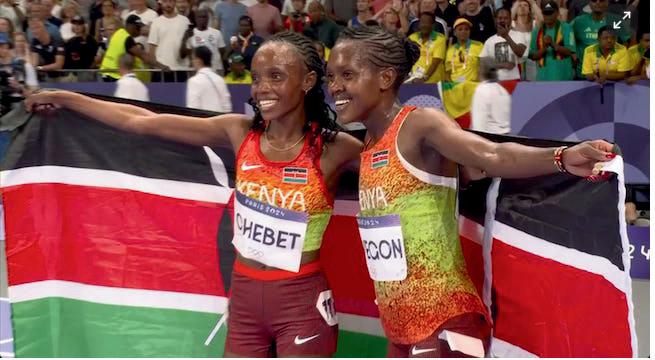
This year’s World Athletics Awards has stirred a wave of disappointment across Africa, where many fans expected to see some of the continent’s record-breaking athletes honored. Instead, once again, African stars have been sidelined, raising a question that has echoed for years: Why are African athletes consistently overlooked in major global awards?
This isn’t an isolated incident. Just last month, the Ballon d’Or Awards in Paris overlooked many African players who have dominated the soccer field with exceptional performances. Despite record-breaking feats, African athletes face a longstanding struggle for recognition on the world stage. This frustration is amplified when we see the achievements of athletes like Beatrice Chebet, whose 2024 season was nothing short of historic, yet her name is notably absent from the finalists’ list for Athlete of the Year.
**The Achievements of African Athletes**
Beatrice Chebet has had an unparalleled year, one that should bean undeniable beacon of athletic excellence. In 2024 alone, shewon two individual Olympic gold medals, set a world record in the 10,000 meters, clinched a Diamond League title, and clocked two of the eight fastest 5,000-meter races in history. Add to this her cross-country and road racing world championships, and it becomes evident that her achievements this year were historic. Chebet’s dominance is not only remarkable but has set a new standard for what it means to excel in track and field.
So, why is she absent? It’s worth examining the criteria for Athlete of the Year, which should ideally reflect both performance and dedication to the sport. Sydney McLaughlinLevrone, the American track and field star who made the finalists’ list, is undeniably a talented athlete. But her achievements this year, though noteworthy, seem overshadowed by Chebet’s season.
Based on World Athletic’s own ranking system, which assigns points based on performance, McLaughlin-Levrone ranks 8th among women this year. By comparison, Chebet’s ranking is considerably higher, and her accolades this season dwarf those of many finalists. Is this an oversight, or is something deeper at play?
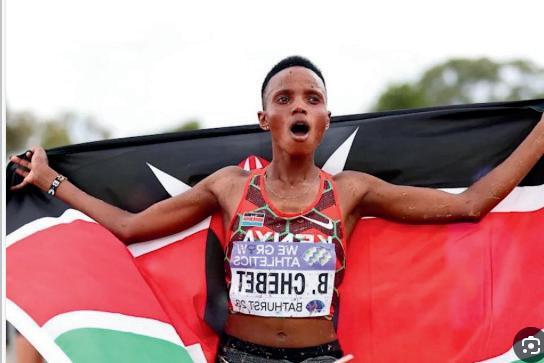
Historically, African athletes have often faced bias in global sports awards. Many believe that this is rooted in a Eurocentric view of sports excellence, where Western media and institutions have consistently promoted athletes from their own regions. Even when African athletes break records or dominate events, recognition often seems delayed or absent. We saw this pattern with athletes like Haile Gebrselassie and Hicham El Guerrouj, legends in their own right, who waited years before receiving global recognition despite their record-breaking performances.
There’s also the influence of media visibility and sponsorships, especially from Westernbased companies, which play a significant role in shaping public perception and award nominations. American and European athletes often enjoy wider media coverage and stronger financial backing, which amplifies their visibility and appeal to award committees. In contrast, African athletes, despite their talent and achievements, often lack the same media footprint, which may contribute to the recurring oversight.
Beyond the disappointment, this issue highlights the broader need for equitable recognition in sports. Awards matter they validate hard work, inspire the next generation, and set a global standard of excellence. When African athletes are overlooked, it sends a message that excellence from the continent is somehow lesser, perpetuating stereotypes that undervalue African talent.
In response, African fans and sports organizations should continue to celebrate and support their champions. But it’s also time for international bodies like World Athletics to re-evaluate their nomination processes and criteria. Transparency and inclusivity are essential for ensuring that awards truly reflect the global nature of sports.
In the end, while we may be disappointed, let’s channel this into support for athletes like Beatrice Chebet, who represent the very best of Africa on the world stage. She may not have made the finalist list, but in the eyes of millions, her achievements this year make her the true Athlete of the Year. As we look ahead, let’s hope that the world begins to see what we already know that African excellence deserves its place in the spotlight.





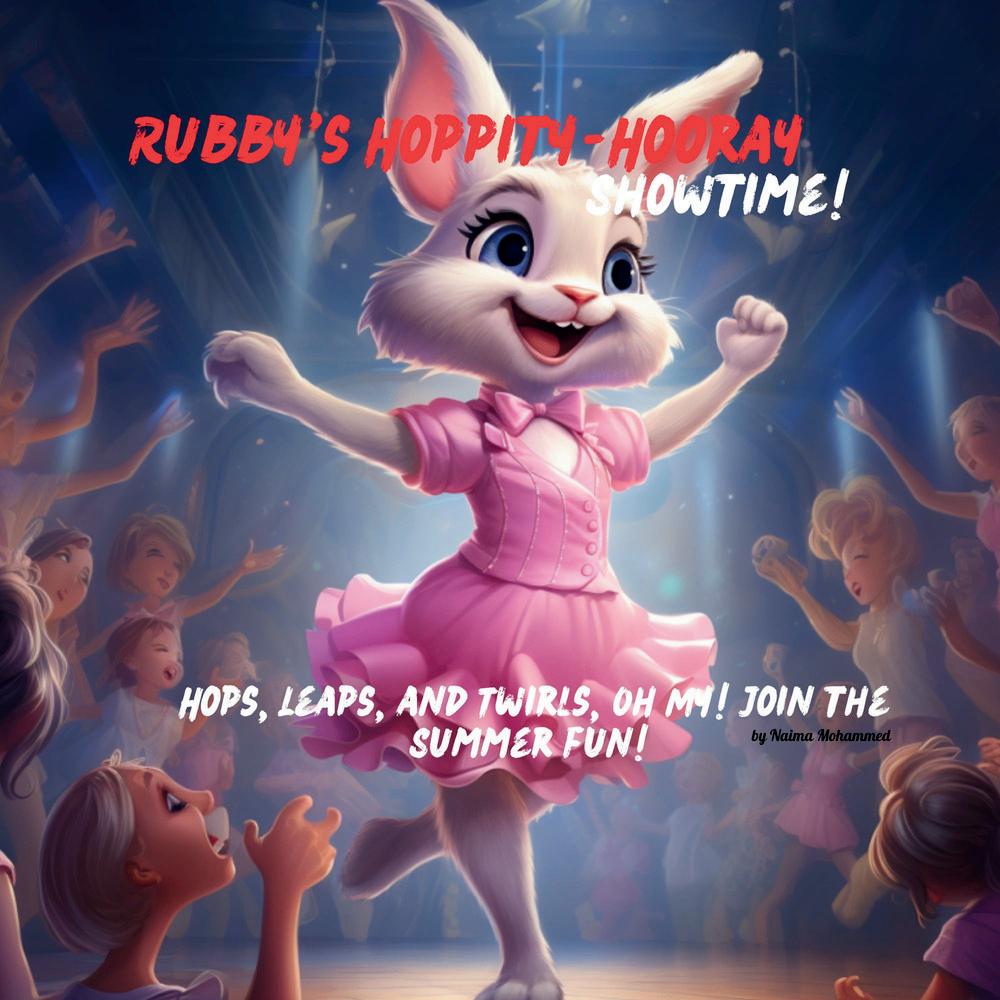



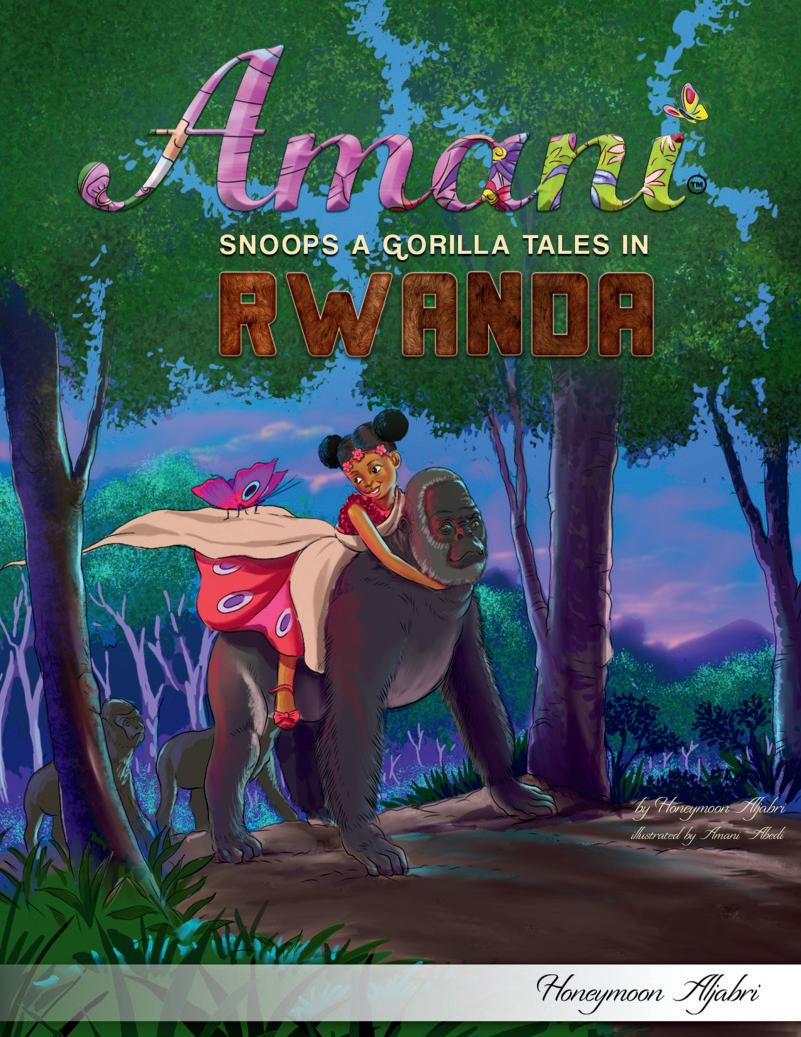



"With hearts full of pride and spirits that soar, we honor the extraordinary women who embody the essence of Africa's strength, resilience, and beauty. These remarkable individuals have shattered glass ceilings, defied odds, and inspired generations with their remarkable achievements. They are the shining stars that illuminate the path to a brighter future, the pillars that hold up the fabric of our communities, and the beacons that guide us towards a world where equality, justice, and freedom reign supreme. Let us celebrate their triumphs, learn from their struggles, and pay tribute to their unwavering dedication to making Africa and the world a better place. We proudly present to you.





Lupita Amondi Nyong’o, a trailblazing actress and daughter of Kenyan roots, embodies the pride and resilience of Africa on the world stage. Born in Mexico City to Kenyan politician Peter Anyang’o; Nyong’o, Lupita was raised in Kenya and educated in the U.S., where she discovered her passion for film and theater.

Lupita Amondi Nyong’o, a trailblazing actress and daughter of Kenyan roots, embodies the pride and resilience of Africa on the world stage. Born in Mexico City to Kenyan politician Peter Anyang’o Nyong’o, Lupita was raised in Kenya and educated in the U.S., where she discovered her passion for film and theater.
L Her breakthrough role as Patsey in 12 Years a Slave won her an Academy Award, marking her as the first Kenyan and Mexican actress to achieve this honor. Lupita has continued to shine across genres: from her Tony-nominated performance in Eclipsed on Broadway, to iconic roles in Black Panther and Us, and voice roles in Star Wars and The Jungle Book. With every role, she uplifts African heritage and challenges stereotypes, proving herself an inspiring global icon and true Daughter of Africa.


Charlize Theron, born and raised in South Africa, embodies the strength, beauty, and resilience of the African spirit on the global stage. As one of the world’s highest-paid and most acclaimed actresses, Theron has broken barriers, becoming the first South African to win an Academy Award for her powerful portrayal of Aileen Wuornos in Monster (2003). Her journey from the landscapes of Africa to Hollywood stardom reflects her tenacity and pride in her roots. From her early roles in The Devil’s Advocate and The Cider House Rules to her fearless performance in North Country, she has not only captivated audiences but also elevated the African presence in global cinema. Theron’s achievements have made her a beacon of African excellence, inspiring countless others from the continent to dream big and push boundaries. As a proud daughter of South Africa, her legacy shines as a testament to African talent, strength, and pride.



Helen Folasade Adu, known worldwide as Sade, is Nigerianborn, British-raised singer whose voice and artistry have reshaped the music landscape. Born in Ibadan, Nigeria, and raised in England, Sade remains deeply connected to her African heritage, bringing a unique blend of soul, jazz, and sophistication to audiences globally. As the lead vocalist of the band Sade, she introduced the world to Diamond Life, her debut album that became an instant classic and the best-selling debut by a British female artist.
Celebrated for her smooth vocals and timeless style, Sade has left an indelible mark on contemporary music, inspiring countless artists with her elegance and emotive sound. Her contributions earned her a Commander of the Order of the British Empire honor in 2002 and again in 2017. As one of the most successful British female artists ever, Sade remains a powerful symbol of African talent and resilience, sharing the beauty of her heritage with the world.


African-inspired superfoods to kick-start a healthy new year:


This smoothie is packed with antioxidants, vitamins, and fiber, making it a perfect detoxifying drink to start your day.
**Ingredients:**
- 1 tablespoon moringa powder
- 1 tablespoon baobab powder
- 1 handful of spinach or kale
- 1 frozen banana
- 1/2 avocado
- 1 cup coconut water or water
- Juice of 1/2 lemon
- A small piece of fresh ginger (optional)
- Ice cubes (optional)




A warm, hearty soup that helps reset the body with nutritious grains and cleansing vegetables.
**Ingredients:**
- 1/2 cup millet
- 1 tablespoon olive oil
- 1 small onion, diced
- 2 garlic cloves, minced
- 1 teaspoon ground turmeric
- 1 teaspoon ground cumin
- 2 carrots, chopped
- 1 zucchini, chopped
- 1 cup diced tomatoes
- 4 cups vegetable broth or water
- 1 handful of chopped kale or spinach
- Juice of 1 lemon
- Salt and pepper to taste


**Instructions:**
1. Heat olive oil in a large pot over medium heat. Add onion and garlic, cooking until softened.
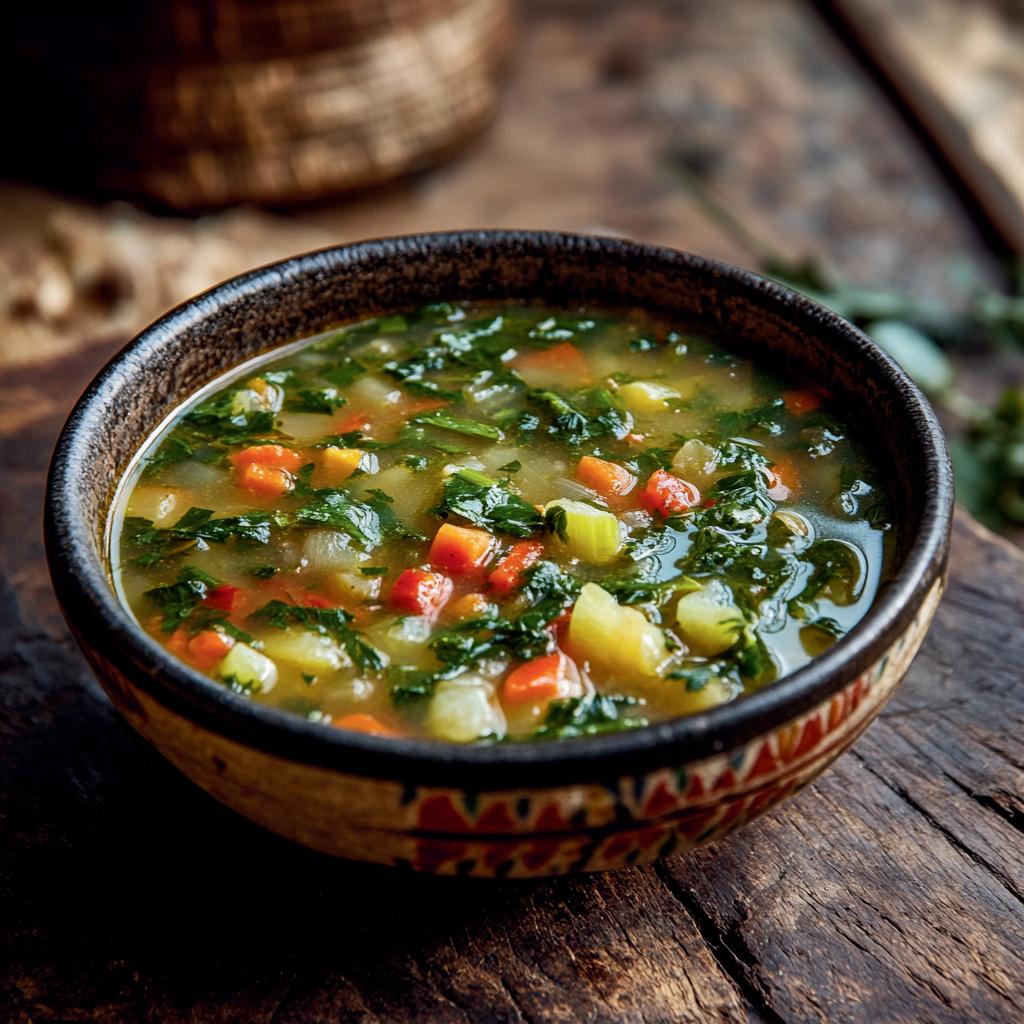
2. Stir in turmeric and cumin, then add millet, carrots, zucchini, and diced tomatoes.
3. Pour in the broth and bring to a boil. Reduce the heat, cover, and simmer for 2025 minutes or until millet and vegetables are tender.
4. Stir in the greens and lemon juice, then season with salt and pepper.
5. Serve hot, and enjoy a warm, detoxifying bowl of goodness.
**Benefits:**
- Millet is a gluten-free ancient grain, rich in fiber and minerals.
- Turmeric and cumin are powerful antiinflammatory spices that support digestion and cleanse the body.
- The soup is hydrating, nutrient-dense, and perfect for detoxing after the holidays.

This refreshing tea is a simple way to cleanse your system and boost your energy levels.
**Ingredients:**
- 1 teaspoon baobab powder - 1-inch piece of fresh ginger, sliced - Juice of 1/2 lemon
- 1 teaspoon honey or agave syrup (optional) - 2 cups hot water



**Instructions:**
1. Add ginger slices to a teapot or mug.
2. Pour hot water over the ginger and let it steep for 5-7 minutes.

3. Stir in baobab powder, lemon juice, and honey if desired.
4. Mix well and sip slowly while enjoying the warming effects.
**Benefits:**
- Baobab boosts the immune system and provides a rich source of vitamin C.
- Ginger helps improve digestion, reduce bloating, and detox the body.
- Lemon supports hydration and alkalizes the body. These recipes will help you cleanse and nourish your body, setting the tone for a healthy start to 2025!.
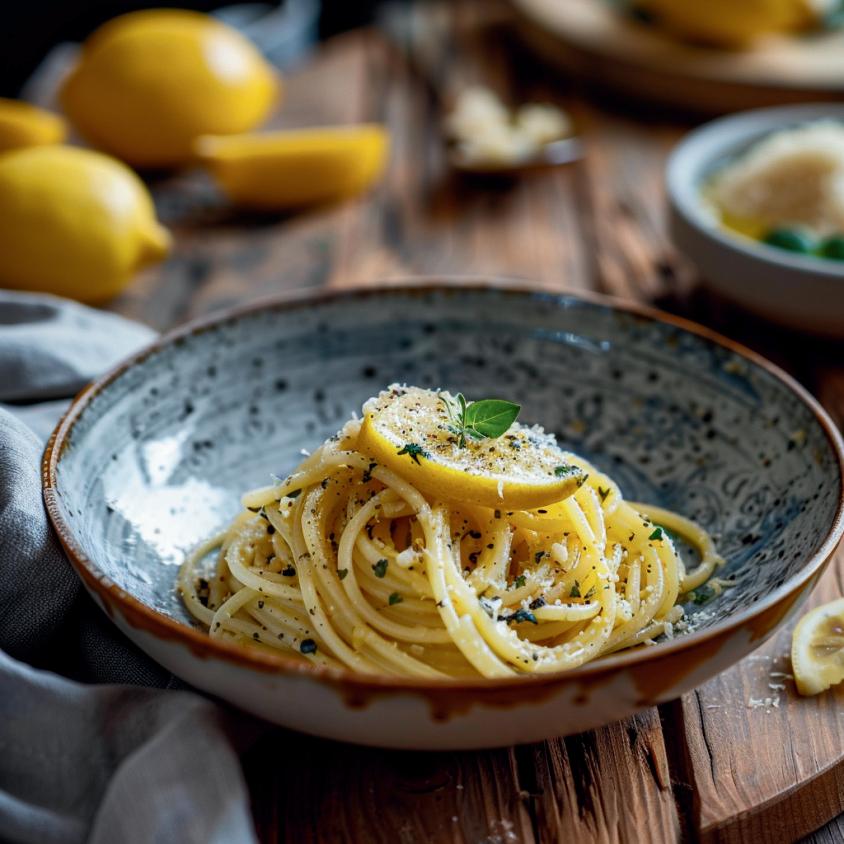
- 1 lb (450g) spaghetti (because nothing says Italian love like spaghetti)
- 1/2 cup unsalted butter (channel your inner Julia Child don’t be shy!)
- 6 cloves garlic
- Zest of 2 lemons
- Juice of 2 lemons (freshly squeezed)
- Lemon slices for garnish
- Salt and pepper to taste
- Herb of your choice for garnish (parsley is classic, but basil or chives work too)
1. **Pasta Preparation:**
Bring a large pot of salted water to a boil. Add the spaghetti and cook until al dente (firm but tender, like a loving hug). Drain, and set aside, keeping it warm.
2. **Garlic Butter Bliss:**
In a large skillet, melt the butter over medium heat. Add the minced garlic and sauté until fragrant and just starting to turn golden (about 2-3 minutes). Your kitchen should smell like an Italian dream.
4. **Spaghetti Serenade:**
Add the cooked spaghetti to the skillet.
Toss gently to coat the pasta evenly with the buttery, lemony, garlicky goodness.
Season with salt and pepper to taste.

5. **Garnish with Grace:**
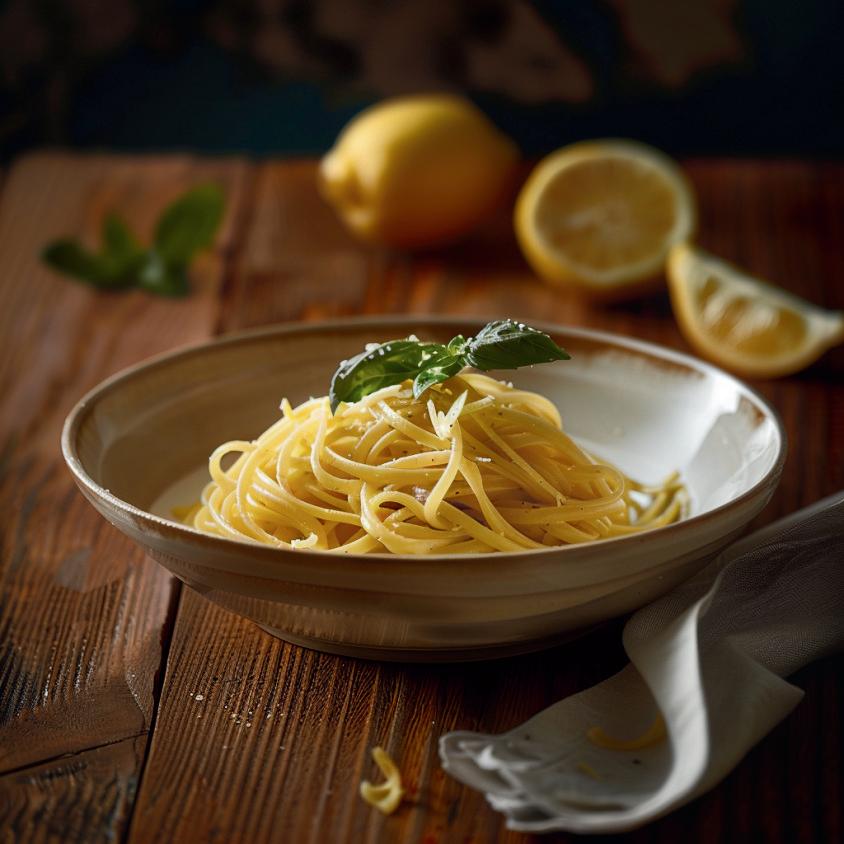
Remember, it’ all about balance.
Transfer the spaghetti to a serving dish.
Garnish with your chosen herb. Parsley adds a touch of classic elegance, basil brings a sweet and chives offer a mild onion flavor.
6. **Lemon Finishing Touch:**
Decorate with fresh lemon slices for a bright, cheerful presentation.
**Pro Tip:** Serve immediately with a side of crusty bread to soak up any extra sauce. A light, crisp white wine or a sparkling water with a slice of lemon would make the perfect accompaniment.
**Love Note:** This dish is simple yet full of much like the love that lingers from cherished memories in the kitchen.
Enjoy your Butter Lemon Garlic Spaghetti, and remember, the best recipes are made with

- 1 loaf of brioche or challah bread, sliced into 1-inch thick slices
- 4 large eggs
- 1 cup whole milk
- 1/2 cup heavy cream
- 2 tablespoons granulated sugar
- 1 teaspoon vanilla extract
- 1/2 teaspoon ground cinnamon
- 1/4 teaspoon ground nutmeg
- Pinch of salt
- 2 tablespoons unsalted butter, for cooking
**Optional Toppings:**
- Maple syrup
- Fresh berries (strawberries, blueberries, raspberries)
- Powdered sugar
- Whipped cream
- Sliced bananas
- Chocolate chips or sauce
- Nuts (e.g., pecans, almonds)
1. **Prepare the Custard**:
- In a large mixing bowl, whisk together the eggs, milk, heavy cream, granulated sugar, vanilla extract, cinnamon, nutmeg, and salt until well combined.
2. **Soak the Bread**:
- Dip each slice of bread into the custard mixture, allowing it to soak for about 2030 seconds on each side. Ensure the bread absorbs the mixture but doesn’t become too soggy.
3. **Cook the French Toast**:
- Heat a large non-stick skillet or griddle over medium heat and add 1 tablespoon of butter.
Once the butter is melted and bubbling, add the soaked bread slices to the skillet.
- Cook the bread slices for 2-3 minutes on each side, or until golden brown and cooked through. Adjust the heat if necessary to prevent burning. Cook in batches if needed, adding more butter to the skillet as required.


4. **Serve
- Transfer the cooked French toast to a plate and keep warm in a low oven (about 200°F) if cooking in batches.
- Serve the French toast hot with your choice of toppings. Drizzle with maple syrup, add fresh berries, sprinkle with powdered sugar, or dollop with whipped cream. Customize with any of the other optional toppings for an extra special touch.
Pro Tip*: For a slightly crispier exterior, you can finish the French toast in a preheated 350°F oven for 5-10 minutes after pan-frying.
Enjoy your Brunch Heaven French Toast! This recipe is sure to be a hit and make any brunch feel special and indulgent.
Classic Sweet Italian Crepes (Crespelle Dolci)
**Ingredients:**
- 1 cup all-purpose flour
- 2 tablespoons granulated sugar
- 1/4 teaspoon salt
- 1 1/2 cups whole milk
- 3 large eggs
- 2 tablespoons unsalted butter, melted and cooled, plus more for the pan
- 1 teaspoon vanilla extract
**Optional Fillings and
Toppings:**
- Nutella/ chocolate or vanilla

ice-cream (why not)spread
- Fresh berries or sliced fruit
- Sweetened ricotta cheese (mix ricotta with a bit of sugar and vanilla)
- Whipped cream
- Powdered sugar, for dusting
- Honey or maple syrup
1. **Prepare the Batter**:
- In a mixing bowl, whisk together the flour, sugar, and salt.
- In another bowl, whisk together the milk, eggs, melted butter, and vanilla extract until well combined.
- Gradually add the wet ingredients to the dry ingredients, whisking continuously until the batter is smooth and free of lumps.
- Cover the bowl and let the batter rest for at least 30 minutes at room temperature. This helps the flour to fully absorb the liquid, resulting in more tender crepes.
2. **Cook the Crepes**:
- Heat a non-stick skillet or crepe pan over medium heat. Lightly grease the pan with a small amount of butter.

- Pour about 1/4 cup of batter into the center of the pan, and immediately tilt and rotate the pan to spread the batter evenly into a thin layer.
- Cook for about 1-2 minutes until the edges start to lift and the bottom is lightly golden. Flip the crepe using a spatula and cook for another 30 seconds to 1 minute on the other side.
- Transfer the cooked crepe to a plate and cover with a clean kitchen towel to keep warm.
Repeat with the remaining batter, adding more butter to the pan as needed.

3. **Fill and Serve**:
- Spread your desired filling (Nutella, ricotta cheese, fresh fruit, etc.) over one side of each crepe.
- Fold the crepe into quarters or roll it up.
- Dust with powdered sugar and top with whipped cream, honey, or syrup if desired.
- Serve warm and enjoy!
**Pro Tip**: Crepes can be made ahead of time and stored in the refrigerator for up to two days. Simply reheat in a skillet or microwave before serving. Enjoy these classic sweet not so Italian crepes as a delightful breakfast, brunch, or dessert!



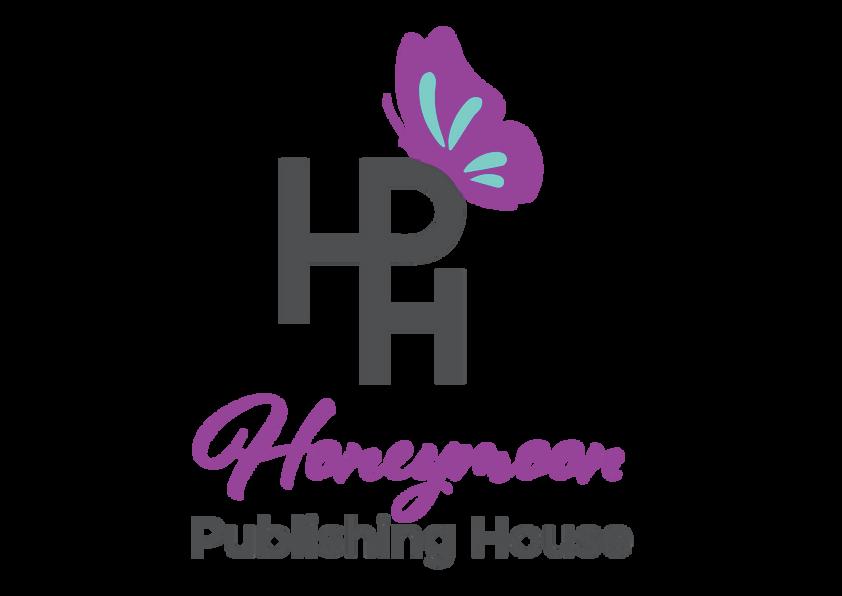

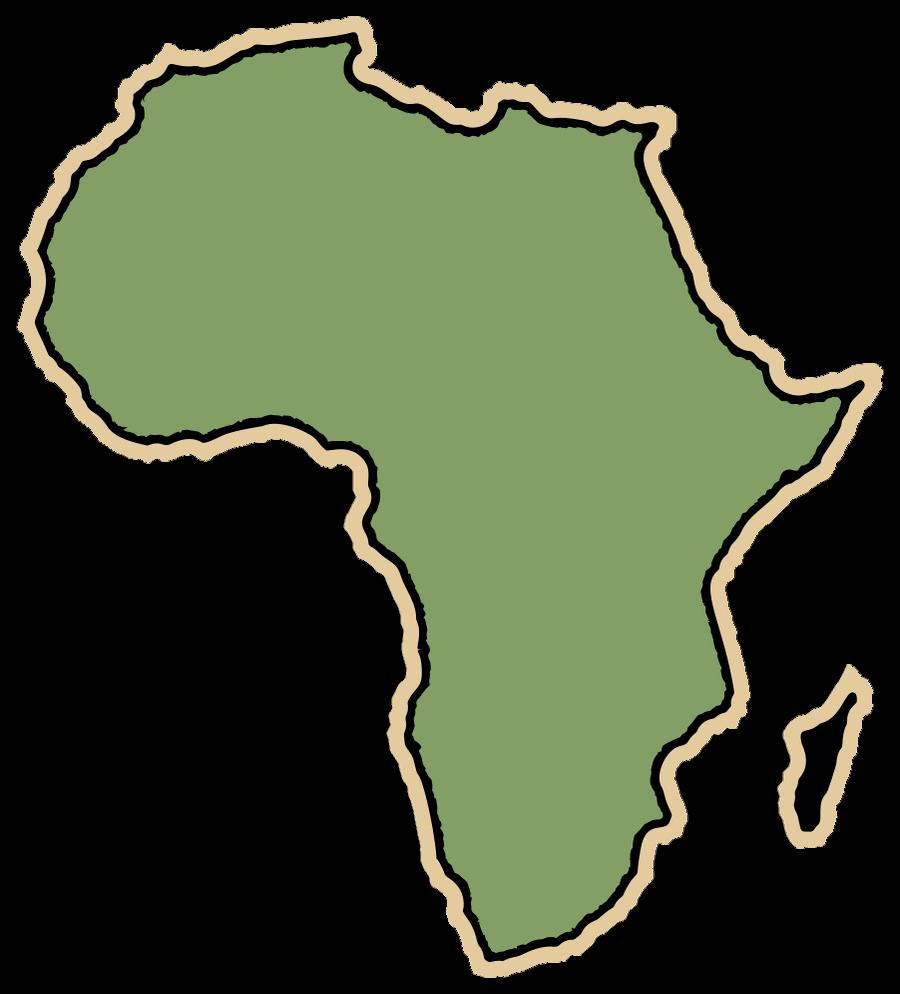
Edited by Francis Afipa Chirwa
That whispers secrets of a continent’s soul

Join me on a journey of love, pride, and self-discovery as I pen a heartfelt letter to the motherland, Africa. This collection of letters, poems, and articles is a celebration of Pan-Africanism and the beauty of African identity. Through my words, I pay tribute to the rich cultural heritage, resilience, and strength of the African people. I explore themes of identity, belonging, and the importance of reclaiming our narrative as Africans. With passion and conviction, I argue that Africa is for Africans, and that our continent's future should be shaped by us, for us. I share my thoughts on the importance of unity, self-determination, and the need for us to reclaim our rightful place on the global stage. This book is a labor of love, a call to action, and a testament to the power of our collective voices. It is a reminder that our stories, our culture, and our history matter. Join me on this journey as we celebrate the beauty, diversity, and greatness of Africa. Let us rise together and reclaim our rightful place as the leaders of our own destiny.


“This book holds so much history.”
Sometimes, life leads us to unexpected places, shaping us into who we are meant to become.
For many authors, the story behind their words is one of resilience, selfdiscovery, and the desire to uplift and inspire others. **People of Africa** had the privilege of visiting Zambia, where we met Luckson Frackson Mvula, the remarkable author of *Slash That Debt*. Before we explored the insights of his book, Luckson opened about his personal story, a journey as profound as the lessons woven into his writing. For him, *Slash That Debt* is not merely a financial guide; it’s a reflection of his life and the trials that shaped him. “This book holds so much history. I want people to understand the real struggle behind the words,” he shared. Luckson’s story begins in rural Zambia, where hardship was a constant.
After losing his father in 2005, his family faced severe challenges. His mother, now a widow, took on the difficult task of raising Luckson and his elder sister alone. In search of a better future, they moved from Chadiza District to Chipata City, only to find that life in the city wasn’t the solution they had hoped for.
With few opportunities and his mother struggling to find stable work, their situation worsened.
“My mother started borrowing money just to keep us going,” Luckson recalls. Soon, they were trapped in a relentless cycle of debt, borrowing from one person to repay another. The burden weighed heavily on their lives.
“There were days when lenders came to our house, publicly humiliating my mother. It was painful.”

Though just a teenager, Luckson felt the immense pressure on his family. He made the difficult choice to leave school to work, doing odd jobs like gardening and bicycle delivery to help his mother. Despite their efforts, the debt only grew, deepening their d ”There were moments I feared for my mother’s life, wondering if she would return from her desperate attempts to find help,” Luckson reflected. Yet, through it all, he clung to the belief that education was their only way out of the debt trap. “I knew education was my only hope of breaking free.”
With determination, Luckson returned to school, despite financial difficulties. His hard work paid off when he graduated with top marks from Chipata Day Secondary School. However, even in academic success, debt continued to haunt him. ;
“I used all my savings to pay off the loans. When the opportunity came to study medicine at Copper Belt University, I had nothing left.”

Forced to drop out of medical school due to financial constraints, Luckson’s resolve only strengthened. He worked tirelessly to pay off his family’s debts, bit by bit. “I paid off every penny my mother owed. It took years, but I did it. And even when I found myself in debt, I knew I could overcome it.” Luckson’s journey through debt taught him valuable lessons that he now shares in *Slash That Debt*. “This book is both my story and a tool for others,” he explains. “I want to inspire people in difficult financial situations to keep going. I want to offer practical advice to those feeling trapped, like we once did”
*Slash That Debt* is more than a financial guide; it’s a blueprint for reclaiming your life, no matter how overwhelming your circumstances may seem. “Whether you’re facing financial hardship or not, this book has something for everyone. It’s about finding freedom and peace of mind,” Luckson shared passionately.
Today, Luckson is studying medicine full-time at the University of Lusaka, financing his studies through disciplined savings. He is also a social media entrepreneur and medical practitioner, known as Luckson F. Mvula on Facebook. His relentless pursuit of his goals led him to establish Lafram Trading Limited, a retail company. His interests in epidemiology, mental health, financial health, and African politics reflect his desire to make a lasting impact on his community and beyond.
When asked what Africa means to him, Luckson’s answer was simple yet profound: “Union.”; He believes that Africa’s strength lies in unity, not just across borders but in shared economies and infrastructure. Citing the TAZARA railway between Tanzania and Zambia, he explained, “We are stronger when we are united. Africa has limitless potential if we work together.”
As our conversation with Luckson drew to a close, it was clear that his story is not just about overcoming debt it’s about hope, resilience, and the power of forging new paths. His message to the world rings loud and clear:”We are better together.” Thank you, Luckson, for being part of our final issue for 2024. We wish all our readers a joyful holiday season.
*Slash That Debt* is more than a financial guide; it’s a blueprint for reclaiming your life, no matter how overwhelming your circumstances may seem
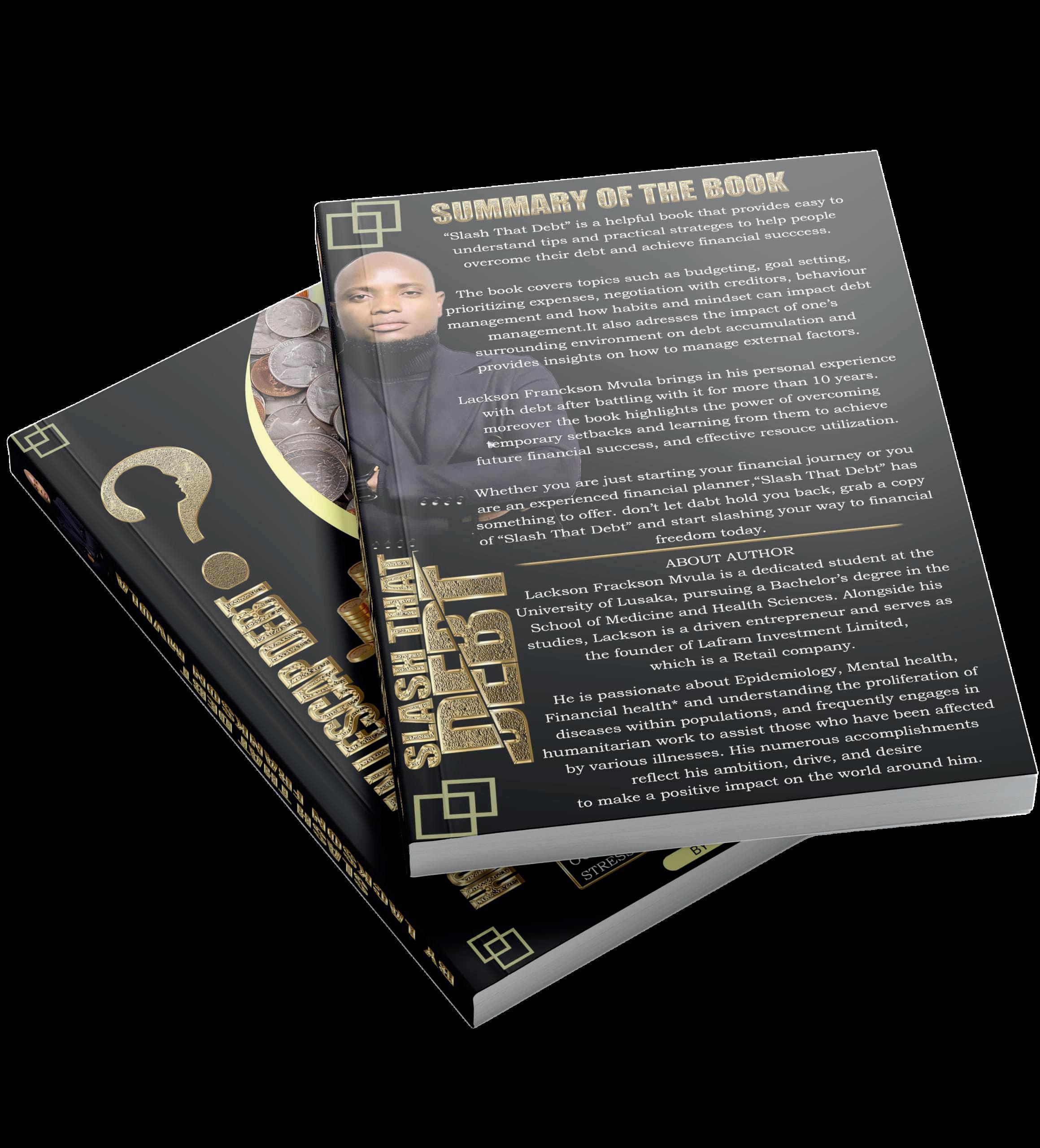
*Slash That Debt* is more than a financial guide; it’s a blueprint for reclaiming your life, no matter how overwhelming your circumstances may seem
LET US ALL UNITE AND CELEBRATE TOGETHER THE VICTORIES WON FOR OUR LIBERATION LET US DEDICATE OURSELVES TO RISE TOGETHER TO DEFEND OUR LIBERTY AND UNITY
O SONS AND DAUGHTERS OF AFRICA FLESH OF THE SUN AND FLESH OF THE SKY LET US MAKE AFRICA THE TREE OF LIFE LET US ALL UNITE AND SING TOGETHER TO UPHOLD THE BONDS THAT FRAME OUR DESTINY LET US DEDICATE OURSELVES TO FIGHT TOGETHER FOR LASTING PEACE AND JUSTICE ON EARTH
O SONS AND DAUGHTERS OF AFRICA FLESH OF THE SUN AND FLESH OF THE SKY LET US MAKE AFRICA THE TREE OF LIFE LET US ALL UNITE AND TOIL TOGETHER TO GIVE THE BEST WE HAVE TO AFRICA THE CRADLE OF MANKIND AND FOUNT OF CULTURE
OUR PRIDE AND HOPE AT BREAK OF DAWN.
O SONS AND DAUGHTERS OF AFRICA FLESH OF THE SUN AND FLESH OF THE SKY LET US MAKE AFRICA THE TREE OF LIFE
The world needs Congo more than most people realize. From the smartphones in our pockets to the electric cars driving a greener future, the Democratic Republic of Congo (DRC) is at the heart of global progress. It’s not just Congo’s vast mineral wealth coltan, cobalt, gold, and diamonds that powers the world’s technology and industries, but its rich culture, history, and resilience that have shaped global music, art, and fashion. Yet, despite how much the world takes from Congo, it continues to ignore the suffering of its people.
Congo is one of the richest countries on Earth in terms of natural resources, but this wealth has not translated into prosperity for its people. Instead, it has become a curse, fueling conflicts, foreign exploitation, and a cycle of violence that has lasted for decades. The minerals that drive the global economy are the same minerals that have led to the deaths of millions of Congolese in brutal, unrelenting wars.
At the center of Africa, the Democratic Republic of Congo is a place of breathtaking beauty and immeasurable wealth. Its soil is rich with the rare metals that power our modern lives, from the cobalt in electric car batteries to the coltan in smartphones. But as the world reaps the benefits of Congo’s resources, the Congolese people remain trapped in poverty, their land exploited by foreign interests and armed groups that vie for control of its wealth.
Yet, Congo is more than just its minerals. The country has given the world culture and art that transcend borders. Congo gave us rumba, soukous, kwasa kwasa, and the unmistakable rhythms that pulse through Africa and beyond. Its music has been a gift to the world, with legends like Papa Wemba, Koffi Olomide, and Fally Ipupa leaving an indelible mark on global culture. Congo’s La Sape movement, born in the cities of Kinshasa and Brazzaville, has redefined fashion, turning elegance into a form of resistance and pride in the face of colonial oppression. This movement of style and grace continues to inspire even today.
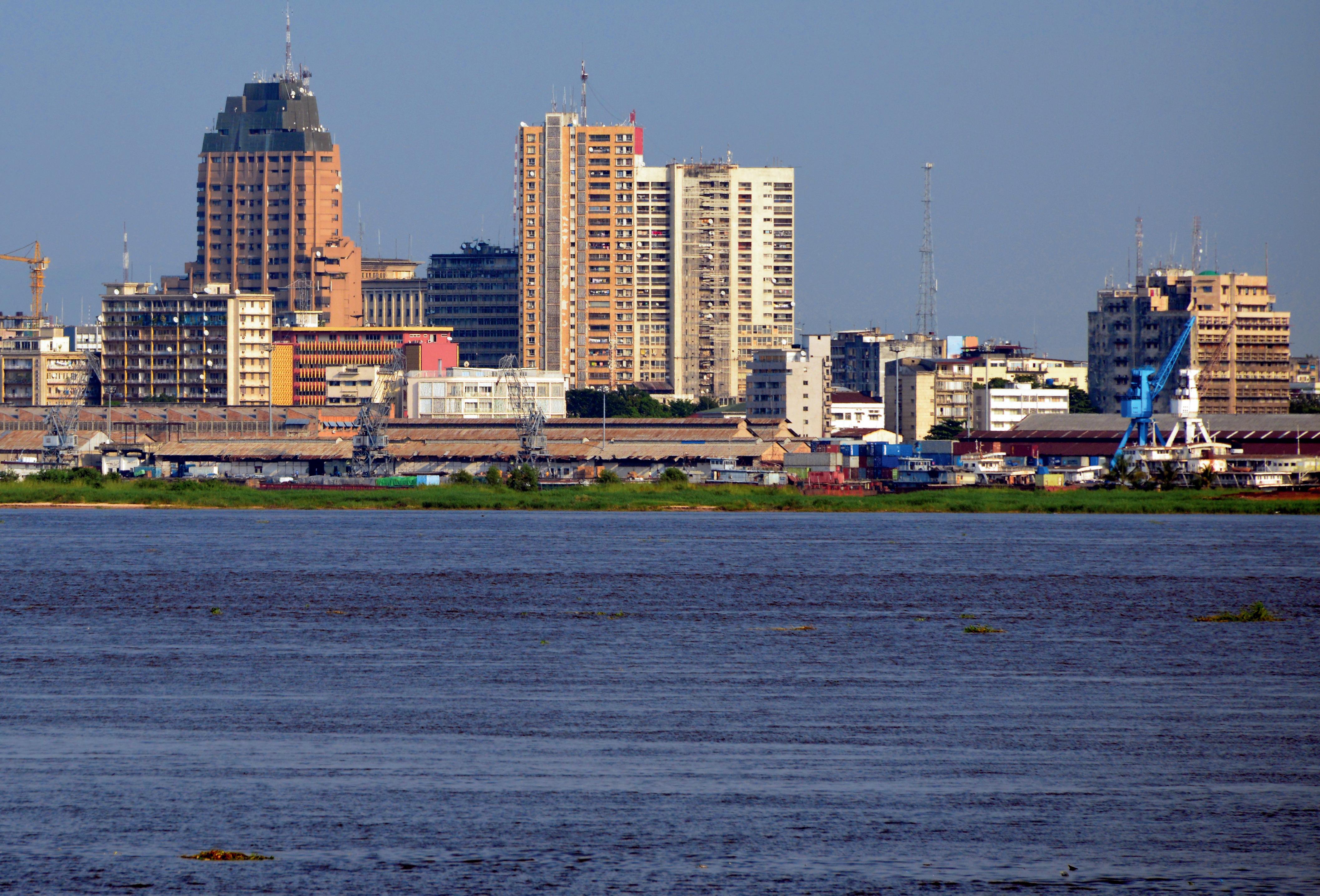
But even as Congo enriches the world, it suffers. To understand why, one must look back at the brutal history of colonialism. No story of Congo can be told without mentioning King Leopold II of Belgium, whose reign over Congo was one of the darkest chapters in history. Under Leopold’s rule, millions of Congolese were killed, mutilated, and enslaved in the name of profit. The rubber and minerals extracted from Congo were taken at the cost of human lives. Even European powers were eventually forced to condemn Leopold’s atrocities, yet his legacy persists. As recently as 2010, Belgian officials referred to Leopold as a hero, a statement that received little backlash an indication of how African suffering is still minimized in the global narrative.

Could you imagine the uproar if a German official called Adolf Hitler a hero today? Yet, when it comes to Africa, these statements are brushed aside, as though the lives lost in Congo are somehow less significant. This speaks to a deeper, more troubling reality that many in the West still do not see Africans as fully human. The echoes of colonialism remain, and the world’s indifference to Congo’s suffering is a reflection of this continued dehumanization.

Congo’s wealth has been its curse, and the wars fought over its resources have left millions dead and millions more displaced. While the rest of the world benefits from Congo’s minerals, its people live in fear, caught in a cycle of violence that seems neverending. The conflict in Congo is not just an African problem; it is a global problem. The same minerals that fuel the violence also fuel the global economy, and the world cannot afford to look away.
The irony is that while Congo is one of the richest countries in the world, it remains one of the poorest. Its people suffer while others profit from its wealth. The exploitation that began under colonialism continues today, with multinational corporations and foreign governments profiting from Congo’s resources while its people struggle to survive.
But Congo’s story is not just one of suffering. It is also a story of resilience, of a people who have given so much to the world and asked for so little in return. The world owes Congo more than it has given, and it is time for that to change.


We write this not only to remind the world of Congo’s importance but to emphasize that Congo’s future is intertwined with our own. We need Congo’s minerals, its culture, its creativity. But more importantly, we need to stand with the Congolese people in their fight for peace, justice, and dignity. The world cannot continue to take from Congo without giving back. Congo is not just the heart of Africa; it is the beating pulse of a world that must do better. We cannot afford to let Congo’s story be one of exploitation and suffering. It is time to recognize Congo’s value not just for its resources, but for its people, its culture, and its contributions to the world.


A father of four and soon-to-be husband, David Joakim Mwanzalima is one of the most unique artists Tanzania, and perhaps all of Africa, has ever seen. Combining his talents for music and hyperrealism pencil drawing, he has crafted a path that marries both science and art, a rare feat that sets him apart. Born in Mwanza, on the serene shores of Lake Victoria, David’s journey from scientist to artist holding a Bachelor of Science in Microbiology from the University of Dar es Salaam is as unconventional as it is inspiring.
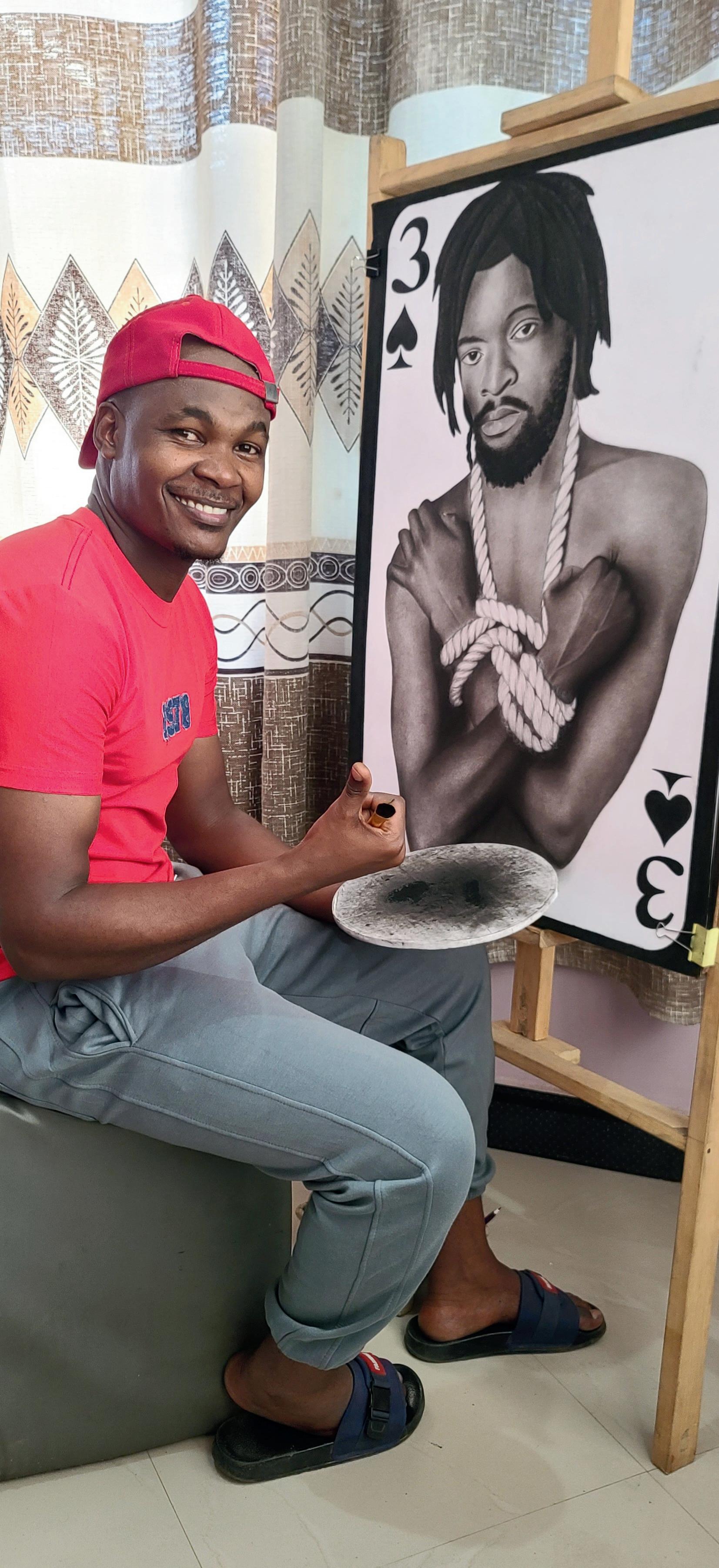

For most, science and art seem worlds apart, but not for David. “I can’texplainit,butIlove science; it fills me with pride, while art brings me joy. These two worldscompleteme,”heshares with a quiet confidence. Despite science currently being the primaryproviderforhisfamily, David dreams of a day when his art will carry him just as far. “Art doesn’tpay…atleastnot here. In Tanzania, we haven’t yet learned to appreciate it like other countriesdo.Peopleare more drawn to entertainment thantofineart.”
His challenge mirrors the struggles of many African artists seekingrecognition.Thelackof accessible platforms and opportunities to showcase their workmeanstheroadtosuccessis often long and winding. “Until doors open, and my work starts feedingmychildren,I’llkeep balancing both worlds. But I won’t stopdrawing.”.

By day, David is a laboratory scientist at the National Institute for Medical Research in Mwanza, Tanzania. His work includes cryopreservation of clinical samples and performing medical laboratory tests for high-profile clinical trials, including the EBOVAC (Ebola vaccine trial) and ADD-VACC (HPV vaccine trial for boys). “It’s fulfilling work,” he says, “but art speaks to a different part of me.”

David’s artistic journey began humbly in 2021, when he discovered his natural talent for drawing. “When I was young, I wanted to be a musician,” he recalls. “But the more I tried, the more I realized that every story I wanted to tell through music had already been told. Then I discovered my real gift—drawing.” Known to his classmates as “Davy the artist,”; his talent blossomed in secondary school, where he became famous for his drawings. In his adult years, this passion transformed into a professional pursuit. Now specializing in hyperrealism pencil drawings, David focuses on portraits of musicians, often drawing while syncing their songs—a fusion of two of his greatest loves. “I’ve found my voice. I sing and draw at the same time, and I can’t explain how much it feeds my soul. Sometimes I forget to eat because I’m so immersed in my art.” Despite not being a professional musician, music fuels his creative process, giving him the energy and inspiration to bring his drawings to life.”Music motivates me. It’s the reason I decided to merge these two forms of expression— drawing and singing. For me, it’s all about authenticity, creativity, and consistency.”


David’s journey, however, is not without its sacrifices.
“Being a father with two jobs is hard. I don’t get as much time to play with my kids as I’d like,” he admits. But each week, he carves out time to ensure his children feel his presence.
“I want to enjoy fatherhood, my art, and my lab work all at once,” he says with a smile that radiates joy. “It’s a balance, but it’s worth it.”
Despite the challenges, David remains undeterred. His goal is to share his work with the world, one pencil stroke at a time. He dreams of collaborating with Tanzanian musicians, but recognition is slow. “I’ve drawn many Tanzanian musicians. They see my work, but it’s hard to get them to acknowledge it on social media. But I won’t let that discourage me. I’ll keep going one song, one drawing, one step at a time.”

Before closing our interview, we asked David what Africa means to him. His answer was simple yet profound: “Original.” His response echoed with the truth that Africa is the origin of humanity, the birthplace of creation.
As the final issue of 2024 draws to a close, we at People of Africa want to thank David Joakim Mwanzalima for blessing us with his time, creativity, and insight. His story is a reminder that passion, persistence, and authenticity are the pillars of greatness. Happy holidays, and here’s to a bright and inspiring 2025.


Your hair matters get your copy today
The continent has produced legendary athletes whose names are etched in the annals of track and field history, from Ethiopia’s Haile Gebrselassie and Kenya’s Eliud Kipchoge to Morocco’s Hicham El Guerrouj. These athletes have reshaped the landscape of distance running, winning Olympic medals, breaking world records, and inspiring future generations. But in the realm of sprinting, a discipline long dominated by the Caribbean and the United States, Africa has remained somewhat underrepresented until now.
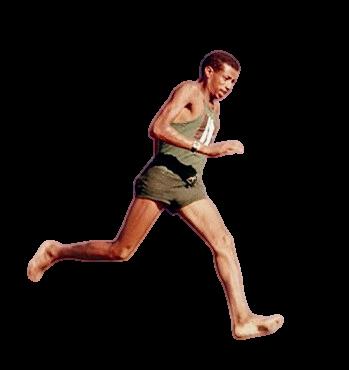


The winds of change are blowing across the African continent, and they are fast. While the world has traditionally turned to Africa for its long-distance prowess, African sprinters are making waves on the world stage, and their rise is unstoppable. The future of sprinting is, indeed, in African hands.
Africa’s association with long-distance running can be traced back to the early 20th century. In the 1960s, Kenya and Ethiopia began making their mark at the Olympics, with runners like Abebe Bikila of Ethiopia winning marathon gold medals in Rome (1960) and Tokyo (1964), famously barefoot in his first victory. By the 1970s and 80s, these countries became the bedrock of long-distance excellence, producing generations of runners whose training at high altitudes and unparalleled endurance stunned the world.
Yet sprinting, often viewed as a different realm of athleticism, remained a domain where African athletes were largely absent from the top podiums. Jamaica, the United States, and other nations dominated the 100m and 200m events, with stars like Usain Bolt, Carl Lewis, and Shelly-Ann FraserPryce becoming household names. But the tides are turning. Africa’s sprints are now starting to shine, and the track world is beginning to take notice.
In recent years, a new generation of African sprinters has emerged, challenging the global sprinting hierarchy. Leading this charge is Botswana’s Letsile Tebogo, Kenya’s Ferdinand Omanyala, and South Africa’s Akani Simbine. Their achievements on the world stage are rewriting the script for African athletes, showcasing that Africa is not just home to long-distance runners but also to world-class sprinters.
Letsile Tebogo, a young sensation from Botswana, has been hailed as the next Usain Bolt; due to his blistering speed and dominance in youth competitions.
In 2022, at the World Athletics U20 Championships, he set a new U20 world record in the 100 meters with a time of 9.91 seconds, drawing comparisons to Bolt himself. Tebogo’s effortless stride and confidence have signaled that he is ready to take on the world’s fastest men.

Ferdinand Omanyala of Kenya has also burst onto the global sprinting scene, smashing stereotypes about African athletes. In 2021, Omanyala set a new African record in the 100 meters, clocking an astonishing 9.77 seconds. His rise is especially remarkable because Kenya is traditionally known for its marathon runners, yet Omanyala’s success challenges this narrative and broadens the scope of African talent on the track.
Akani Simbine, from South Africa, has been steadily making his mark over the years. With consistent sub-10-second performances in the 100 meters, Simbine has represented Africa in global competitions, including the Olympics and World Championships. He remains one of Africa’s most accomplished sprinters, regularly competing with the best in the world and pushing the boundaries of what African athletes can achieve in the short sprints. These athletes are not just symbols of individual excellence but also torchbearers for a movement. Their rise has inspired more young sprinters across the African continent to dream of Olympic gold, and to believe that they too can compete with the best in the world in the 100 meters, 200 meters, and beyond.


The success of African sprinters on the world stage is not just a fleeting moment. It is part of a larger sprinting renaissance on the continent. In countries like Nigeria, South Africa, Botswana, and Kenya, sprinting programs are growing stronger, with better facilities, coaching, and infrastructure. National federations and athletic bodies are recognizing the untapped potential in short-distance events and are investing in the next generation of sprinters. Moreover, the exposure to global competitions, thanks to events like the Diamond League and World Championships, is giving African sprinters the platform they need to prove themselves. With this exposure comes the confidence to compete with, and beat, the best in the world. As more young African sprinters emerge, they are following in the footsteps of athletes like Omanyala, Simbine, and Tebogo, while creating their own paths.
Africa’s future in sprinting is not just an exciting prospect for sports fans it is a testament to the continent’s broader contribution to the world of athletics. From producing the greatest long-distance runners in history to now challenging the global sprinting order, Africa’s talent pipeline is one that the world relies on.
But this reliance on Africa goes beyond the track. The minerals that power the smartphones, computers, and electric vehicles we use every day often come from African soil, particularly from countries like the Democratic Republic of Congo. The world’s dependence on Africa’s natural resource parallels its dependence on Africa’s athletic talent, making the continent an indispensable part of both the global economy and global sports.
As we look toward the future, the potential for African sprinters to dominate the track is not just a dream; it’s becoming a reality. With the right investment, support, and opportunities, Africa’s sprinters will continue to rise, bringing home medals, breaking records, and inspiring future generations. Africa has long been the heart of distance running, but now its pulse is speeding up, and the world is beginning to see that when it comes to sprinting, the future belongs to Africa.
The future of sprinting is not just a question of who can run the fastest it’s a question of how a continent long known for its endurance will now capture the world’s imagination with its speed. The rise of African sprinters is proof that Africa’s contribution to the world of track and field is only just beginning, and the world would be wise to keep its eyes on the finish line because Africa is coming fast.

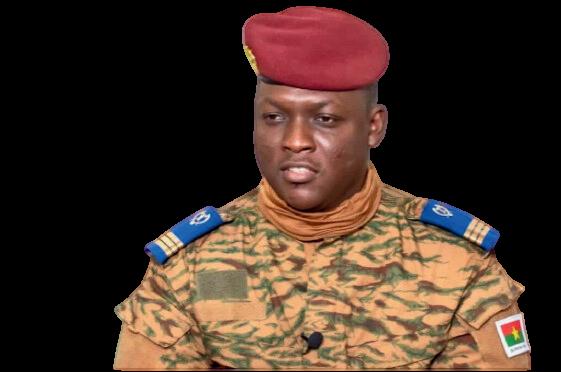
A borderless Africa is possible

In the quiet dawn hours, Rashidah Nakijjoba Mulungi begins her day in Jordan with a ritual that connects her back to Uganda. With a humble strength, she has transformed her role as a housekeeper abroad into a journey of self-growth and resilience a path she is paving with purpose, prayer, and ambition.


For Rashidah, a born-again Christian from Uganda, the choice to work abroad was born out of necessity and hope. In Uganda, she found limited opportunities for the kind of income that could build a future. “The wages here are better than what I could earn at home,” she explains. Yet, her experience as an African housemaid, while enriching, has been marked by the daily navigation of boundaries and sacrifices. Even within the confines of her role, Rashidah has discovered ways to reclaim her autonomy and invest in herself.
“I found that the environment offered me a chance to study,” she reflects, noting the online courses she has pursued to add value to her life. It is through this combination of faith and ambition that Rashidah turns each day’s work into a stepping stone toward a greater purpose.


reshaping her own future but also redefining what it means to be a modern African woman in a globalized world.

Adapting to Jordan has been a test of will and warmth, as Rashidah embraces a drastically different lifestyle. The cultural exchange comes with its challenges both practical and deeply personal. “I hold on to my Ugandan roots,” she says, sharing her choice to forego local staples like lamb, preferring foods that align with her heritage. “It’s important to me to maintain my cultural identity, even if it’s in these small, quiet ways.” Life in Jordan, particularly the biting cold of winter, has been a shock. “I’m often sick with colds and the flu,” she says. The largely indoor lifestyle, compounded by unfamiliar, preserved foods, has taken its toll physically, though Rashidah remains resilient. In a foreign country, her identity becomes an inner strength, one she holds close as she navigates her new surroundings.

Rashidah’s workdays are defined by both rhythm and rigor. The early mornings begin with prayer, grounding her in faith before the tasks of the day begin. By 6 a.m., she’s already in motion, making sure her employers’ coffee is ready and starting her daily routine of tidying, cooking, and organizing. She’s found a certain mastery in her schedule, preparing the house for gatherings and handling duties that stretch well into the evening. “My days end around midnight, sometimes later,” she notes, with a practicality that reflects her determination. Each task is carried out with a dedication rooted in purpose, but Rashidah admits the work requires a fortitude she finds through prayer and reflection. “I find my hope in the Bible,” she says, her faith serving as a daily anchor. Vision for the Future: Redefining the Role of the Housekeeper** While her current position is a means to an end, Rashidah is already looking to the future.

Her dreams extend beyond her role, as she envisions a career empowering others in the domestic profession. “I aspire to be a housekeeper trainer, and I dream of starting an institution where people can come and learn to be a successful housekeeper,” she shares. Rashidah’s vision is to elevate this work, instilling dignity in the role and creating opportunities for others to pursue it as a career. The institution she dreams of would provide hands-on training for both housekeepers and employers, helping bridge cultural divides and foster mutual respect. “I hope to make this profession one that is deserving of respect,” she says, a hopeful sentiment that is as much about teaching skill as it is about changing perceptions.
Rashidah’s favorite meal, *matoke* with groundnuts, is a reminder of Uganda, a taste of home that brings comfort and pride. She carries with her a fondness for the modest, covered styles of her upbringing, blending elegance and simplicity. When her long days finally come to a close, Rashidah finds solace in small, restorative rituals reading, reflecting, and simply listening to the quiet sounds of nature. Her educational background O-Level secondary school, Early Childhood Development training, certificates in housekeeping and spiritual life coaching paints a picture of a woman dedicated to self-improvement and growth. These qualifications serve as milestones in her journey, each one a testament to her resilience and vision.
Rashidah’s journey is one of persistence, sacrifice, and quiet strength. Through each challenge, she finds ways to honor her roots and move closer to her dreams, embodying the dignity and potential of those who work quietly behind the scenes. She is not only reshaping her own future but also redefining what it means to be a modern African woman in a globalized world.
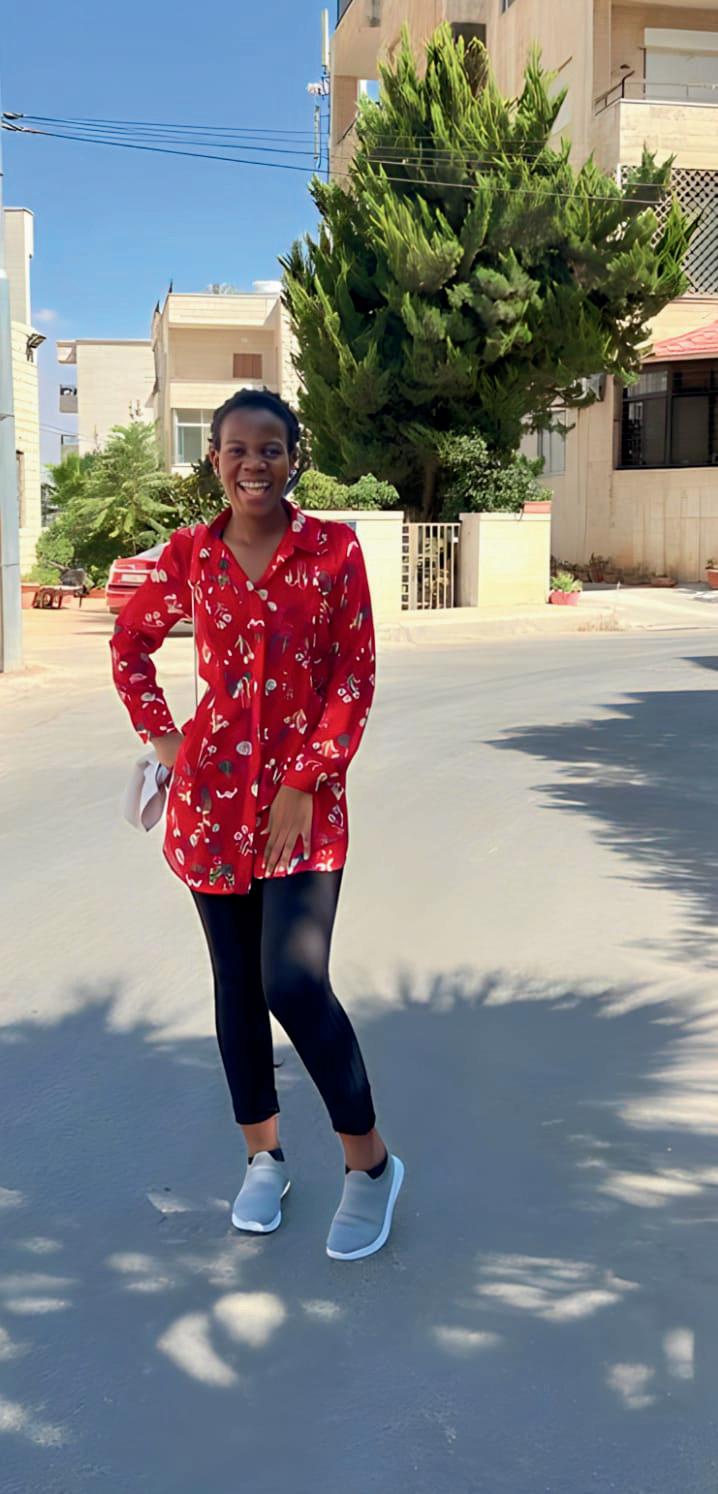

Let’s be honest: when it comes to intimacy, we’ve all been there, and we know nothing speaks our language quite like a perfectly skilled tongue. But with the perks of pleasure can come that lingering, not-so-fresh odor. Yes, we’re talking about the “fishy smell” elephant in the room. Turns out, oral sex can change our natural balance down there. Saliva carries bacteria, which can disrupt vaginal pH, sometimes leading to bacterial vaginosis (BV) an entirely treatable condition that may just need a little attention if you notice itching or an increased discharge. But rest assured, it’s all part of understanding our body’s unique needs. And hey, a happy vagina really is a happy life! So, is it worth it? That’s for you to decide. But if the joys of intimacy are on the agenda, there are ways to enjoy safely and keep everything feeling fresh and fabulous.

Think of your vagina as a carefully tuned ecosystem, a place you trust and know deeply. When new bacteria enter like the natural bacteria in saliva or from fingers it can disrupt this ecosystem, sometimes resulting in a different scent or even BV. BV isn’t dangerous but does require TLC, especially if that scent or other symptoms don’t resolve on their own.
From everyday habits to post-intimacy routines, there are simple steps to keep things feeling as fresh as you deserve:
is key. Scented tampons, douches, and soaps may seem tempting but can throw off your natural balance and irritate the delicate skin. Go for fragrance-free options designed specifically for sensitive areas.
« The Power of Probiotics¤ A daily probiotic can work wonders. Not only do probiotics support gut health, but they also help maintain your vaginal microbiome, keeping yeast and odor under control. Fermented foods like yogurt or kefir are also a natural source of probiotics that work with your body’s rhythm.
« Hygiene ThatÉs Gentle Yet Effective¤ Wipe from front to back, and make cotton undies your go-to to prevent bacteria buildup. After workouts or long days, a quick rinse of the vulva with water (no harsh soaps!) keeps things fresh without stripping away the good bacteria you need.
« Mind Your Menstrual Products¤ For some¥ internal menstrual products like tampons or a menstrual cup reduce odors that might arise from pads. Whatever you choose, remember to change them often your comfort and health deserve it.
« Hydrate and Skip the Excess Sugar¤ Staying hydrated supports all of your body’s natural processes. Meanwhile, too much sugar can create the perfect setting for yeast, which might introduce new smells. Small swaps in diet can make a big difference.
A few small tweaks can keep postplay scents at bay, so feel free to enjoy your time with peace of mind: A Fresh Mouth is the Best Mouth: You might kindly ask your partner to rinse or brush before oral. The bacteria from their mouth can influence your balance, so it doesn’t hurt to bring a little fresh health into the picture.
- **Keep Hands Clean**: From phones to doorknobs, hands encounter all kinds of bacteria. A gentle reminder to wash up preplay keeps your ecosystem healthy and happy.
- **Quick Post-Play Rinse**: A rinse with water after intimacy (no scented soaps!) or opting for unscented lube may help keep everything in balance.


If you’re after the perfect balance, here’s a little checklist to keep things fresh:
Diet Focus: Load up on fruits, vegetables, and foods with natural probiotics like yogurt. A diet rich in these can naturally support your balance.
Breathable Fabrics: Choose cotton and other breathable fabrics over synthetics that trap sweat and bacteria.
Hygiene Routine: Shower daily, ideally twice once in the morning and before bed. Keep the vulva clean but avoid overwashing, as this can disrupt natural oils.

Bathroom Habits: After intimacy, urinate to flush bacteria from the urinary tract, and consider a gentle wash with water. Not toilet paper please!
Sometimes, the scent is just a sign of your body’s normal changes, but if it persists or is paired with discomfort, give your healthcare provider a call. They may suggest treatment, such as antibiotics, to quickly get things back to balance. At the end of the day, embrace this time to understand your body, practice self-care, and keep that confidence high.

A happy vagina is a happy life!
Women are more than their breast ; Goats also have two
Women are like the earth ; everyone sits down on her

Women are like fire if you have to , take a little
African proverbs
we’re excited to start working on the next issue of People of Africa magazine, and we want to hear from you
What stories do you want to read? what themes so you want us to explore ? who are the african changemakers, innovators, and trailblazers you want to learn more about share your idea with us , and help shape the next issue of people of africa magazine let


Do you have a story waiting to be told? Is there someone you know whose experiences deserve recognition? We believe every voice has a story worth sharing, and we want to hear yours.
People of Africa Magazine invites you to contribute to our vibrant community of storytellers. Each season, we curate four issues that capture the diverse narratives, rich cultures, and inspiring journeys across the African continent.
Whether it's a personal journey, a community initiative, or an extraordinary achievement, your story could inspire, motivate, or enlighten others. We welcome contributions from writers, photographers, artists, and anyone passionate about storytelling.
Editor-in-Chief Honeymoon Aljabri and the entire team are dedicated to amplifying voices and celebrating the essence of Africa. We want you to be part of this enriching experience.
To share your story or nominate someone whose narrative deserves a spotlight, please contact us via:
Phone: +1-202-977-7175
WhatsApp: [+1-202-977-7175]